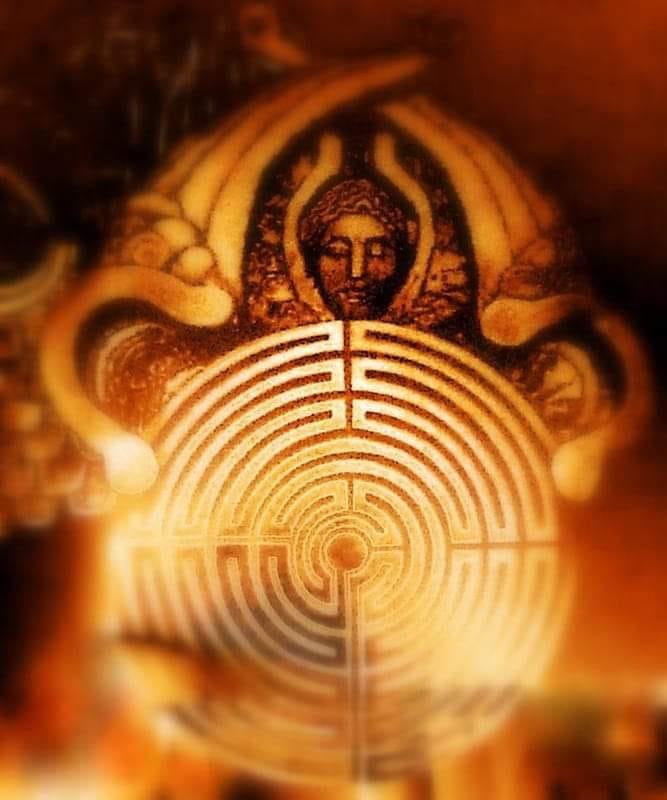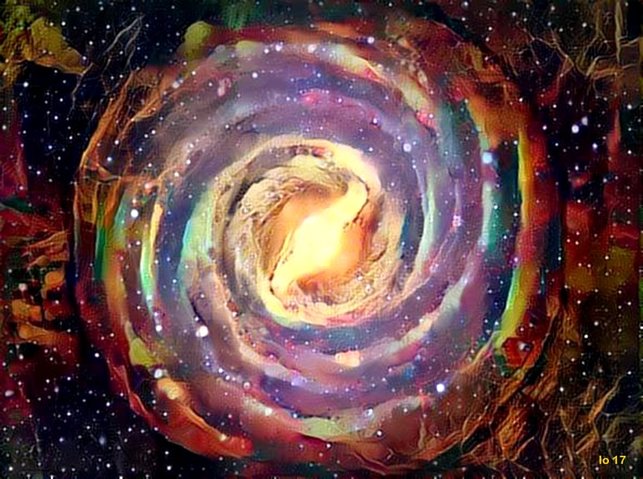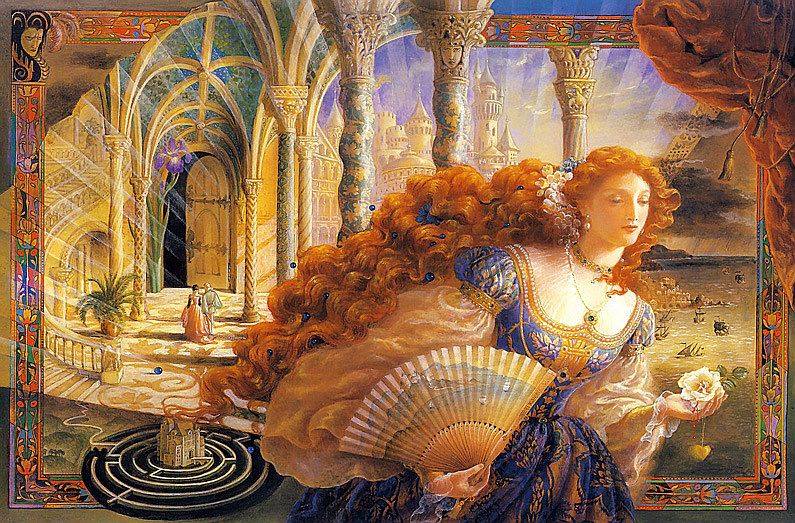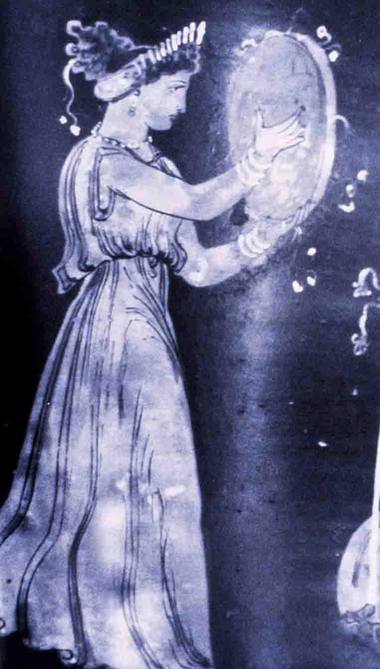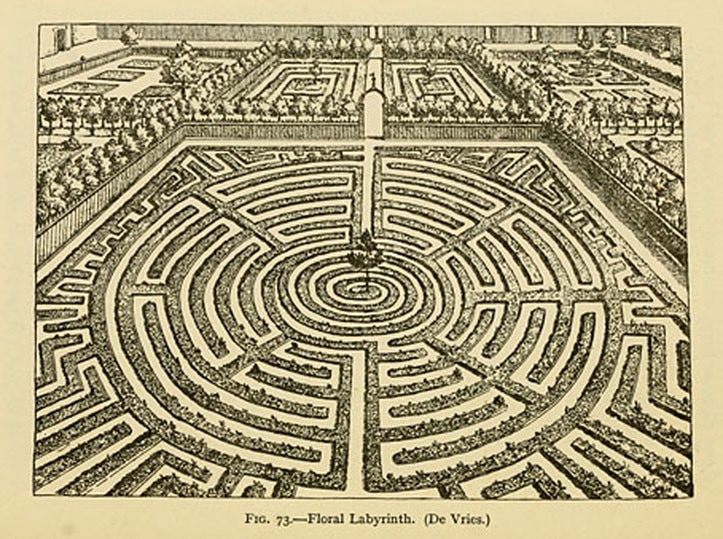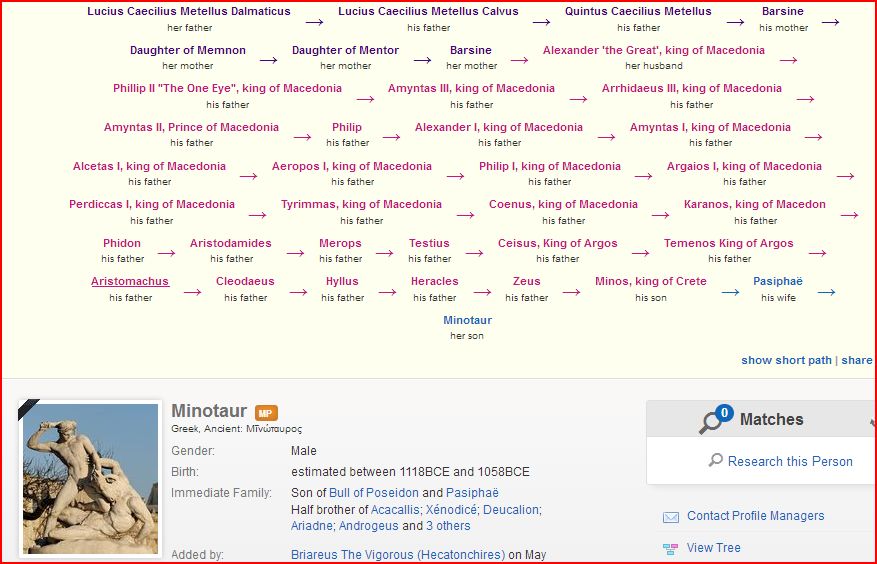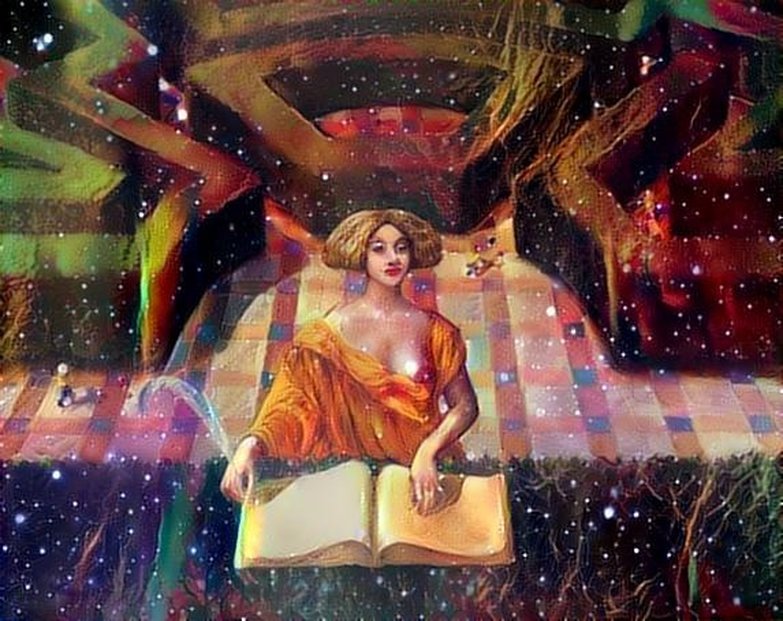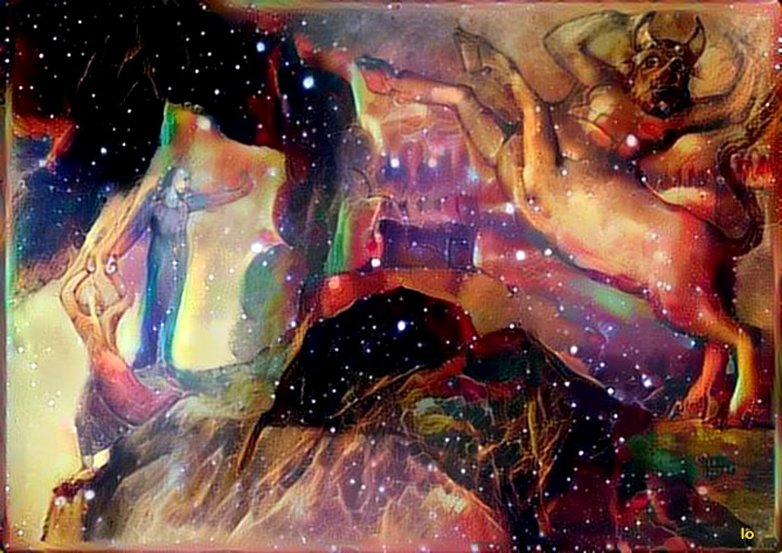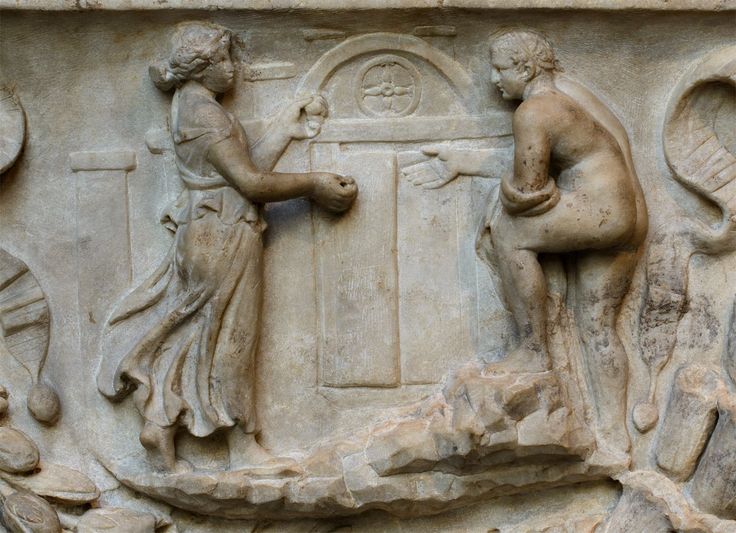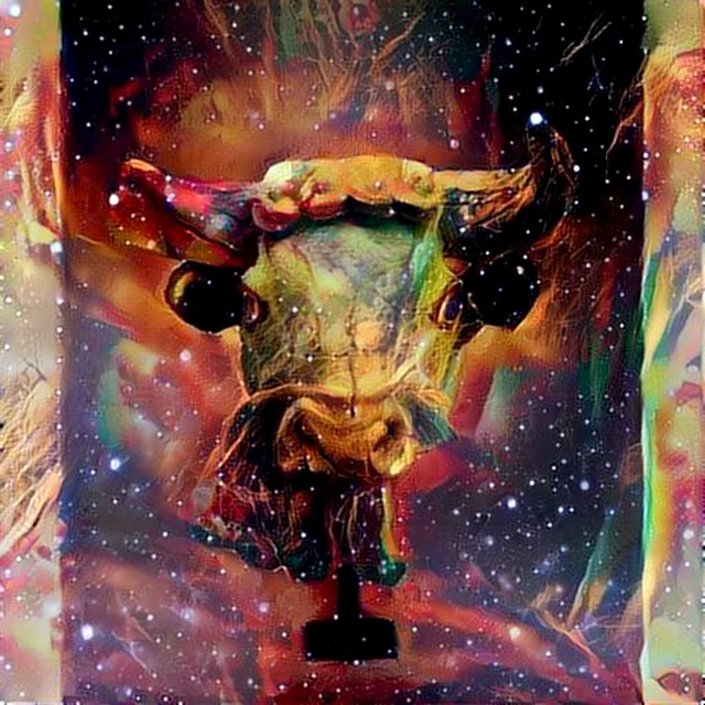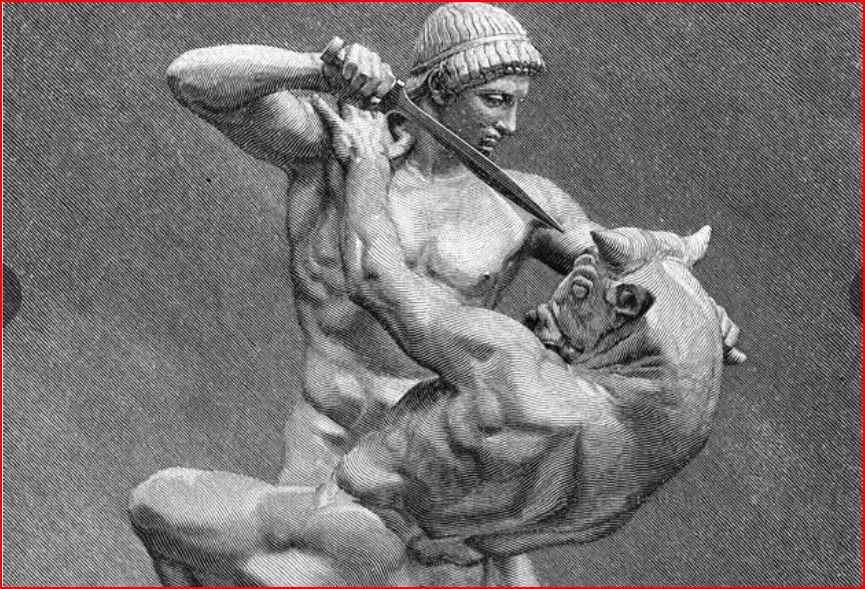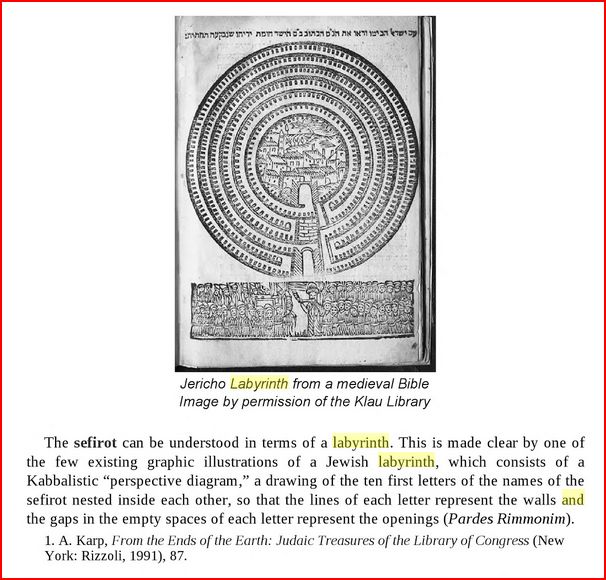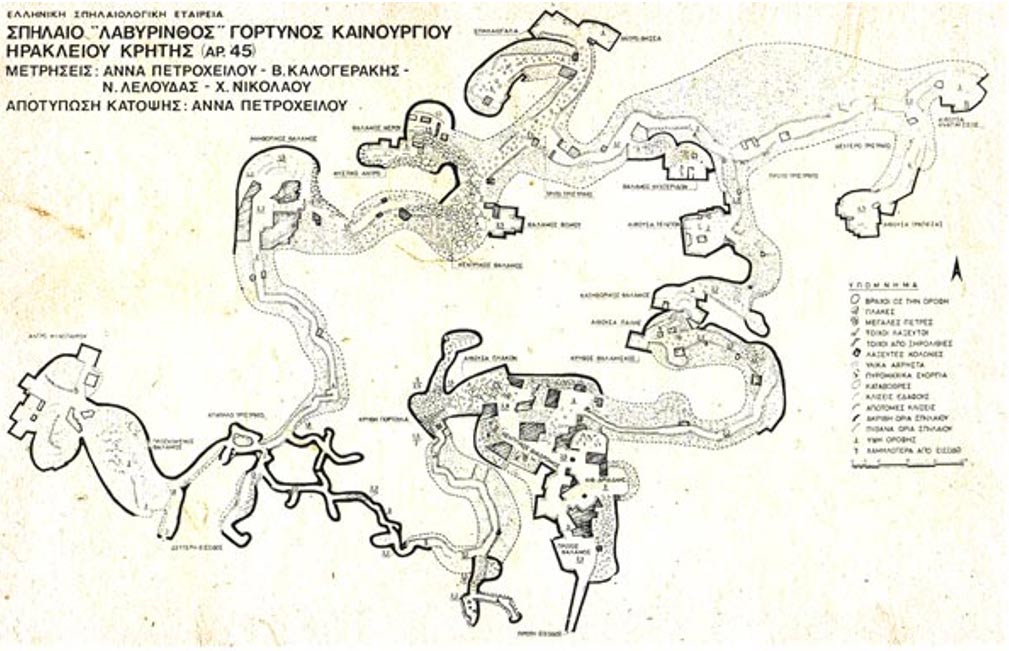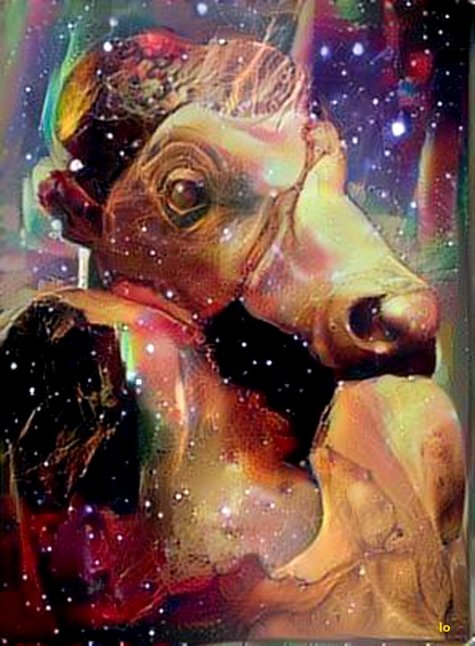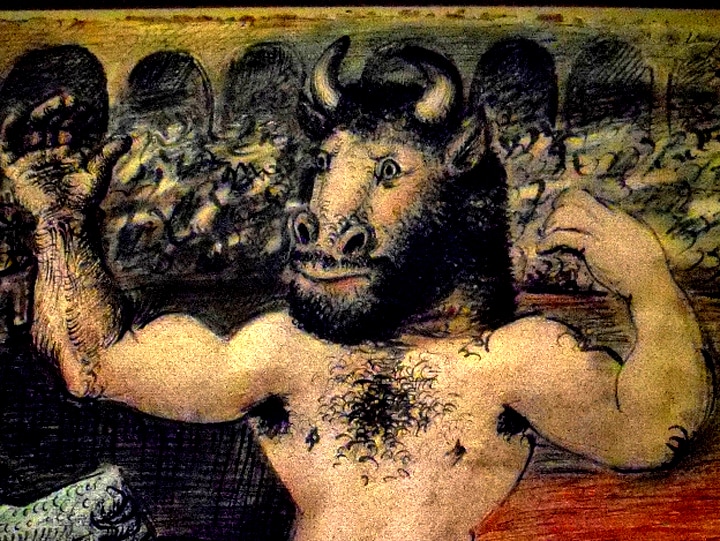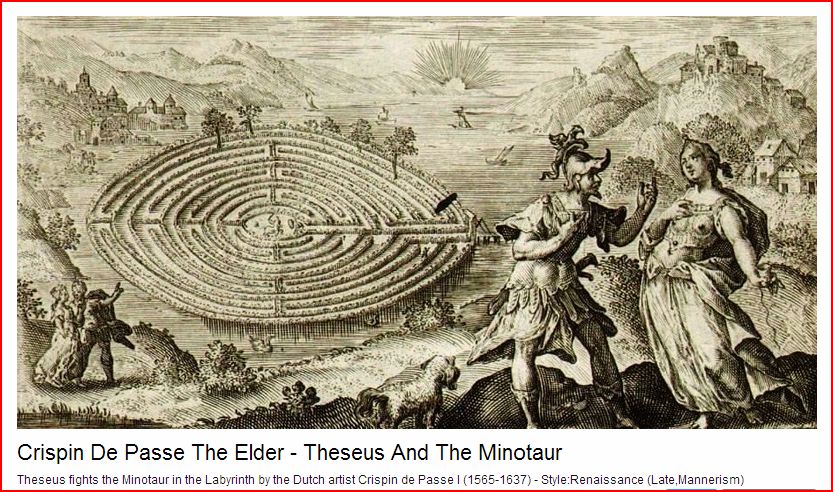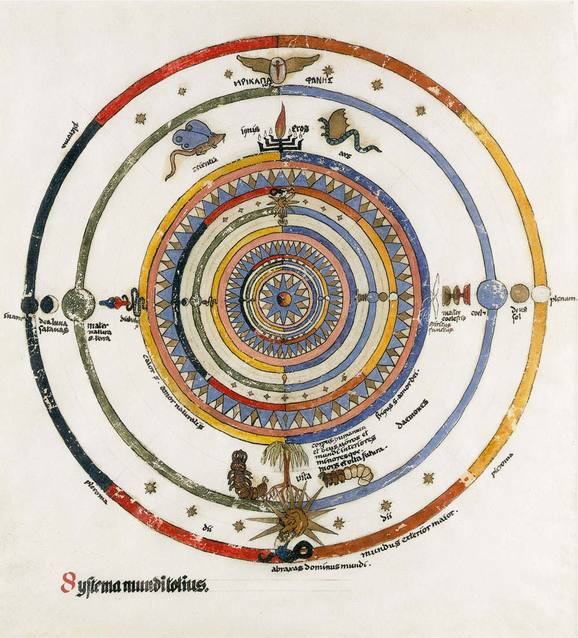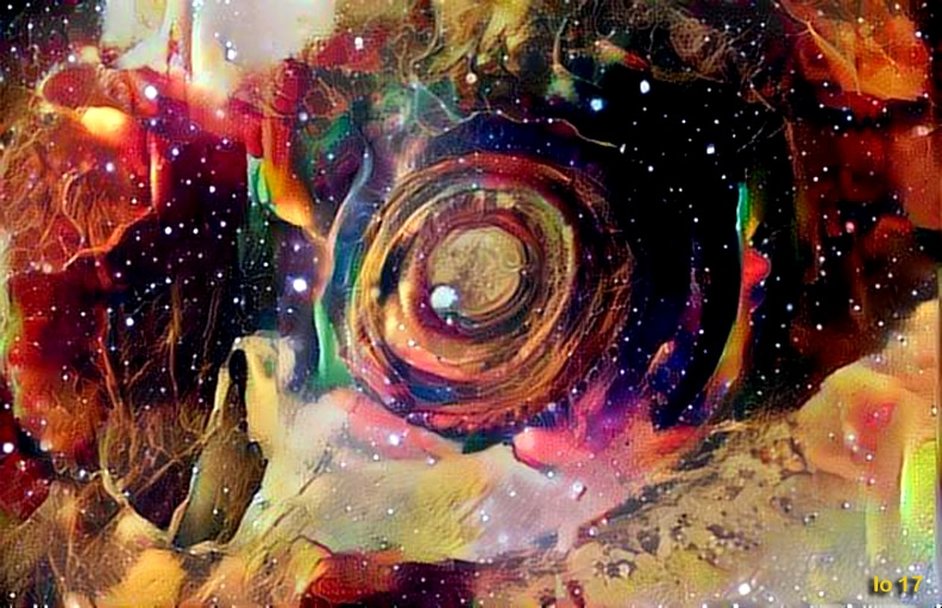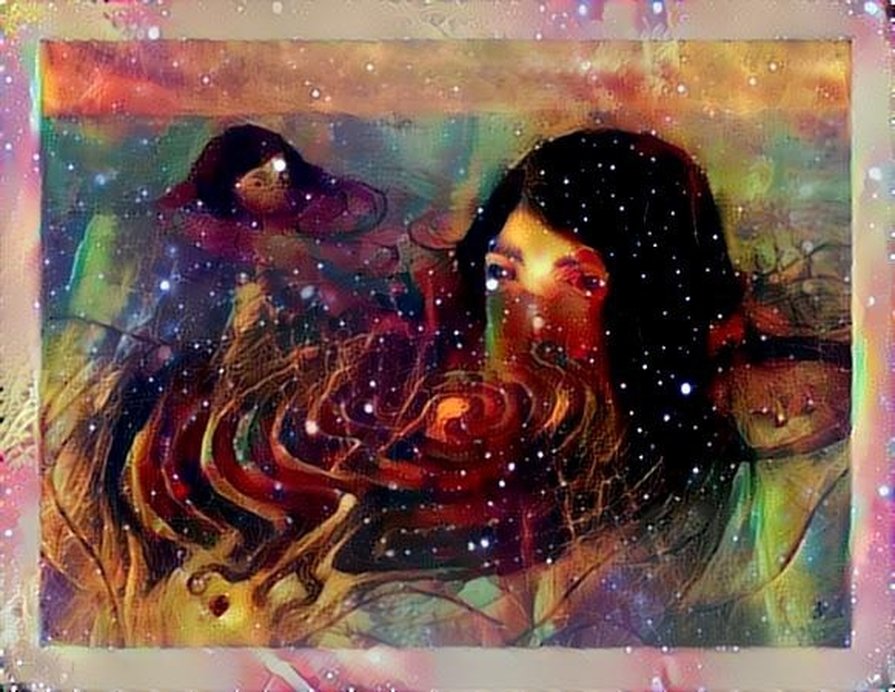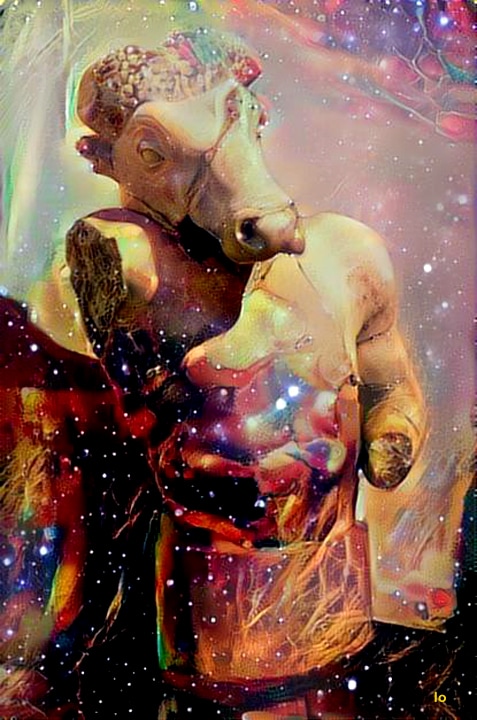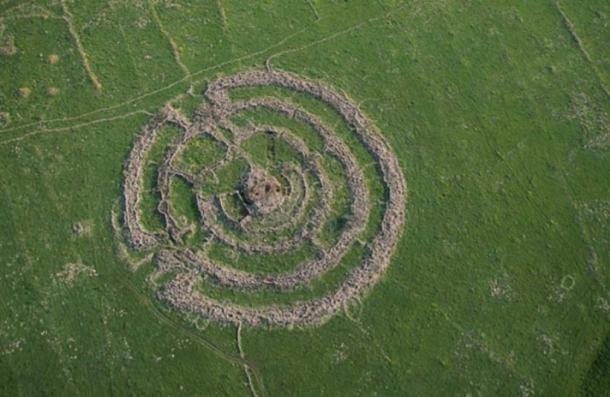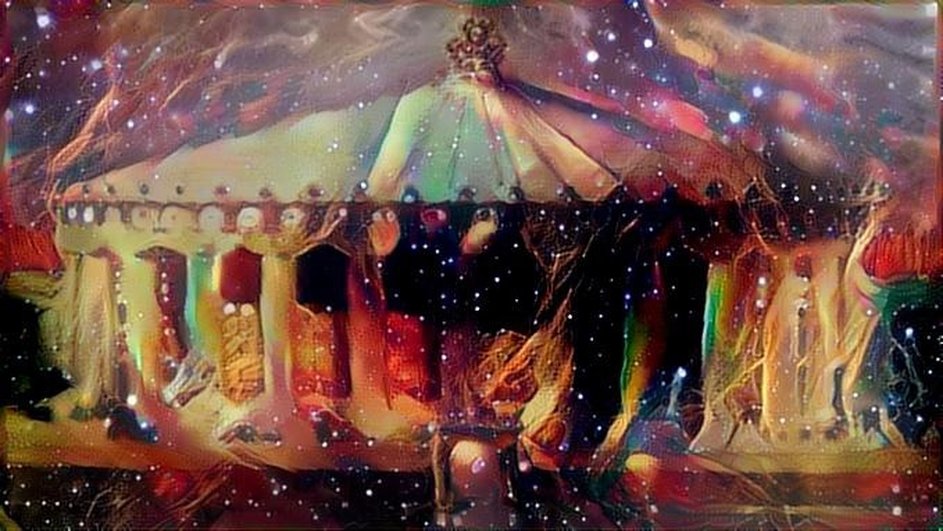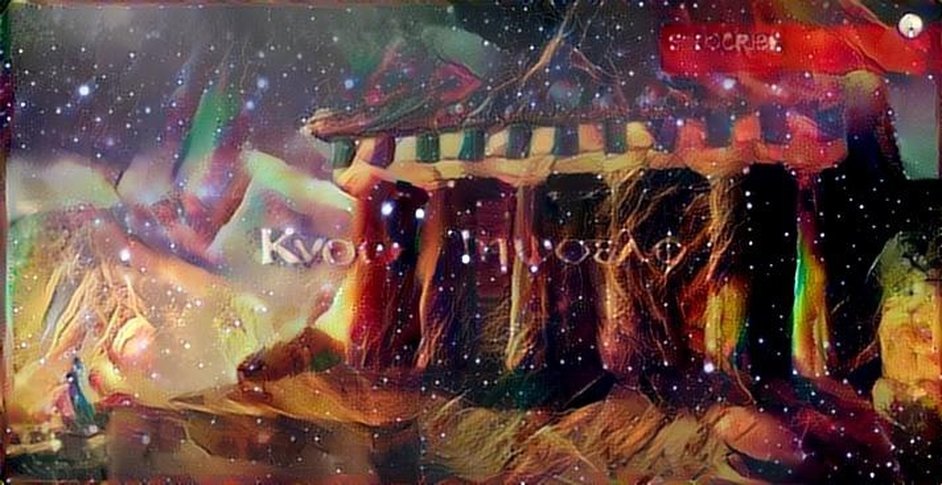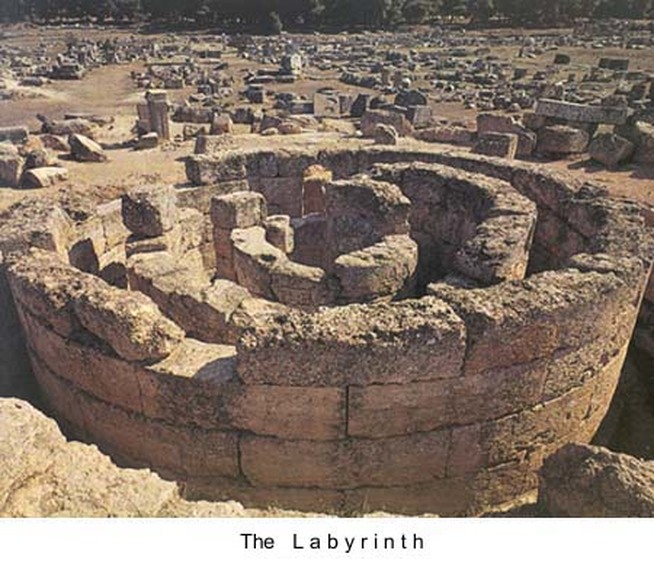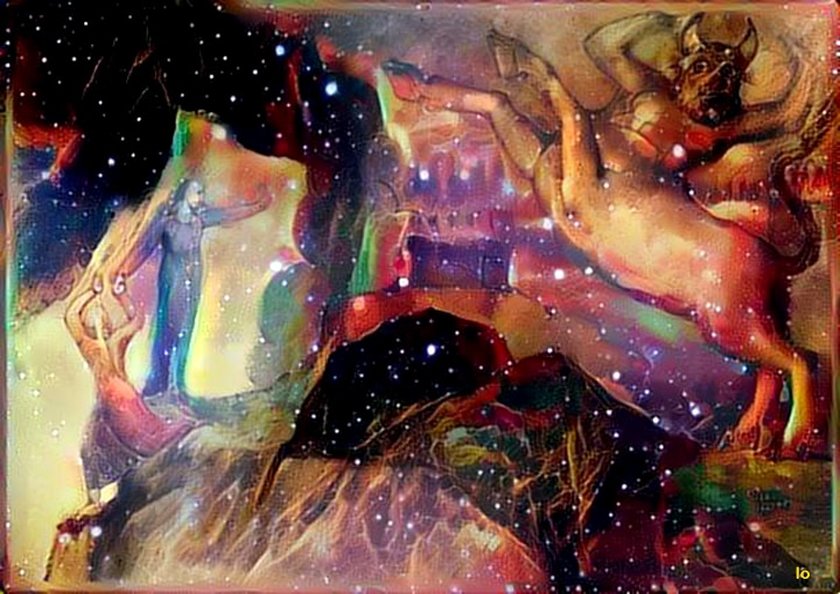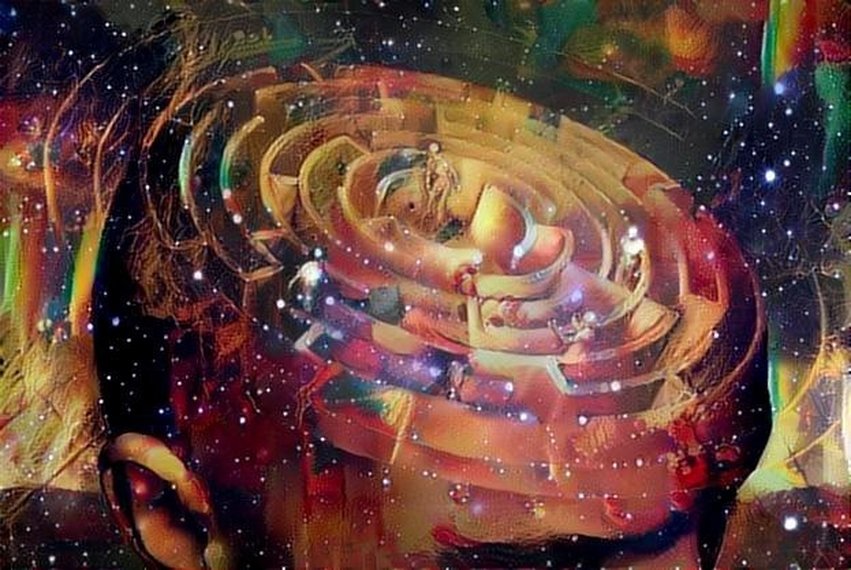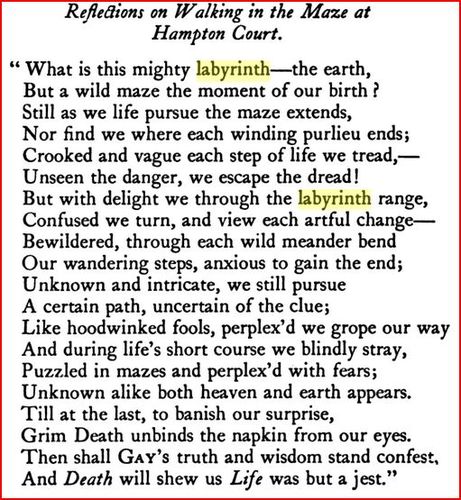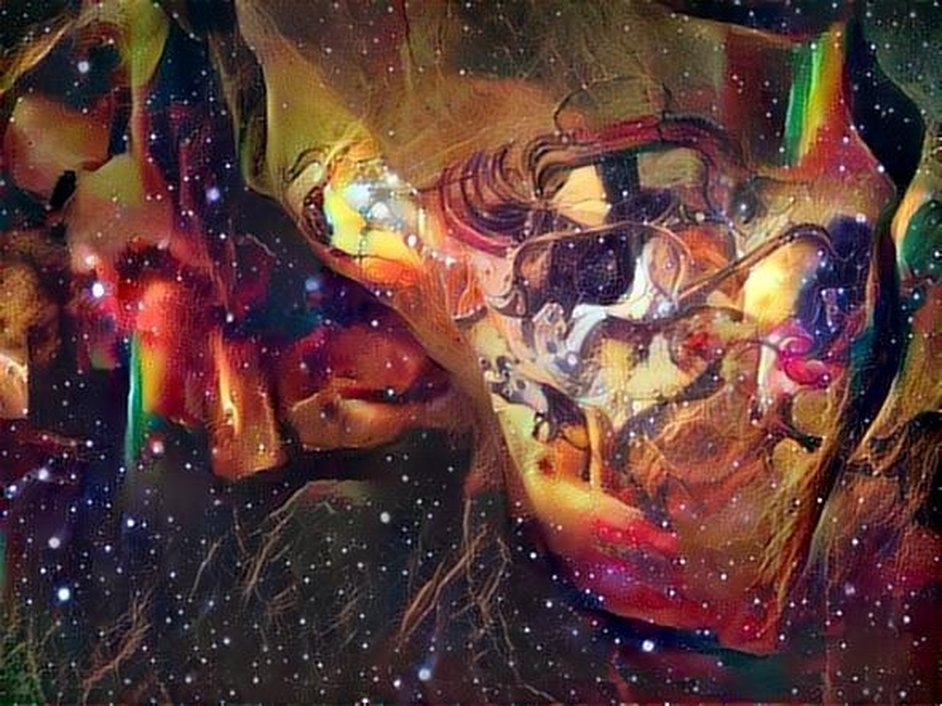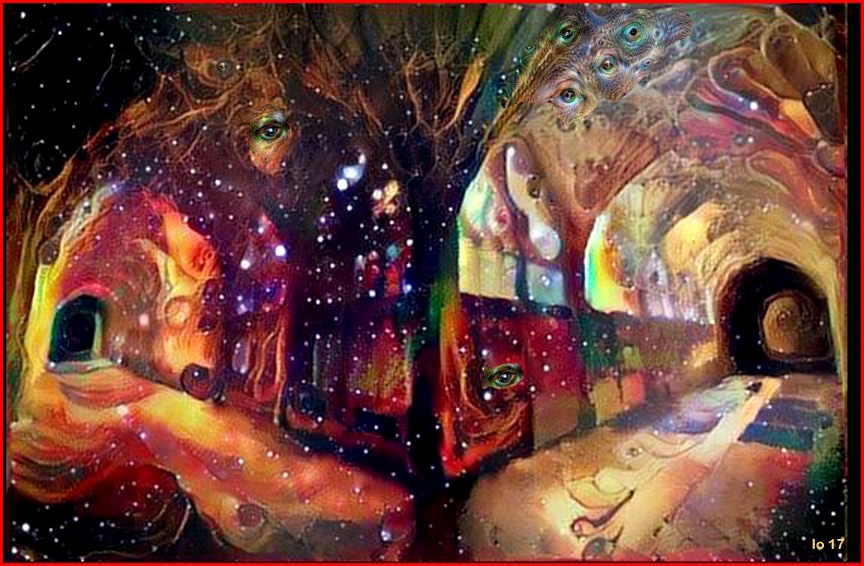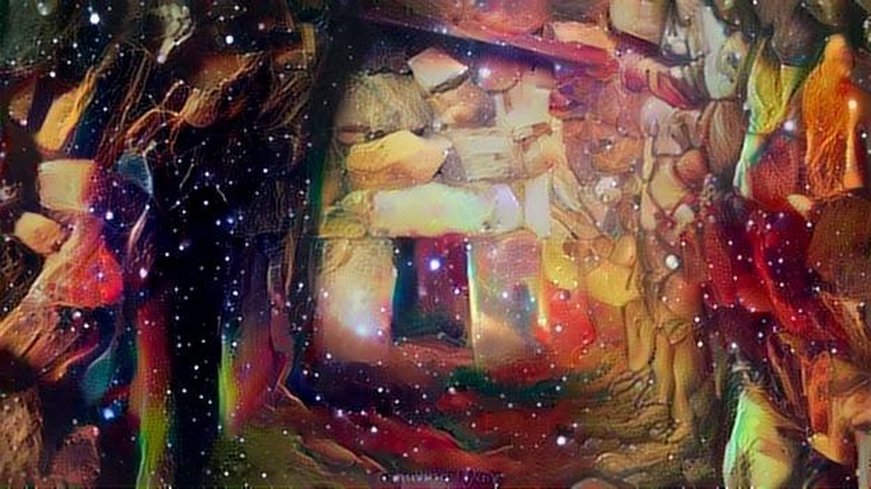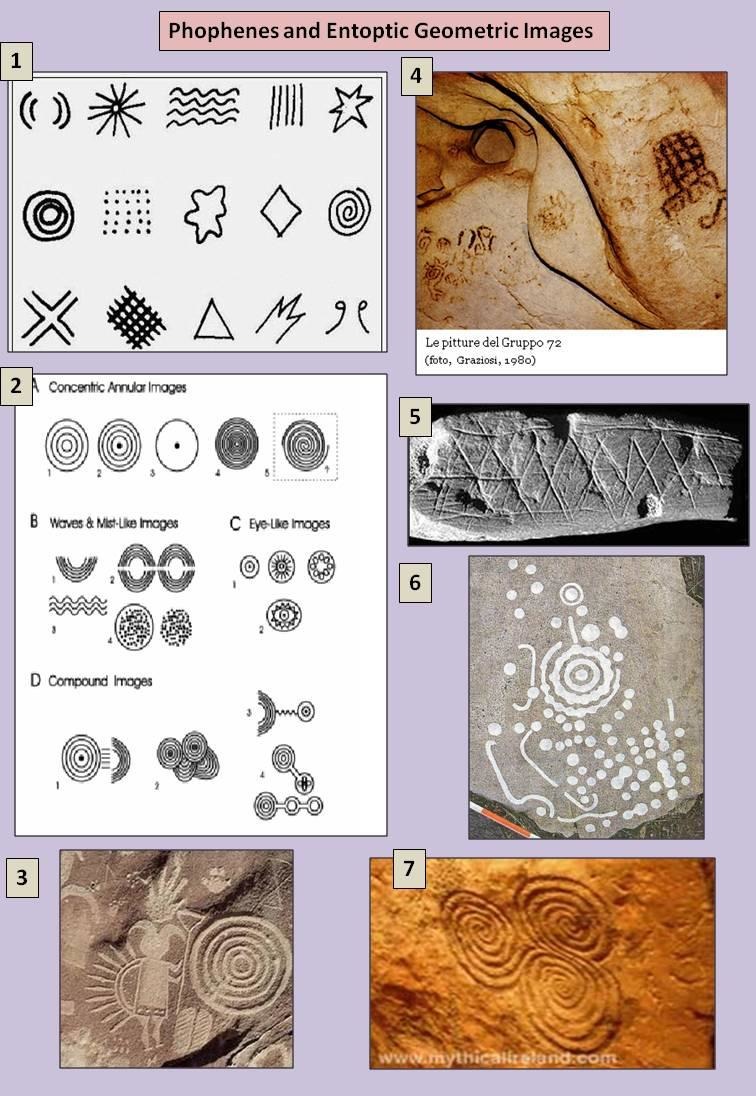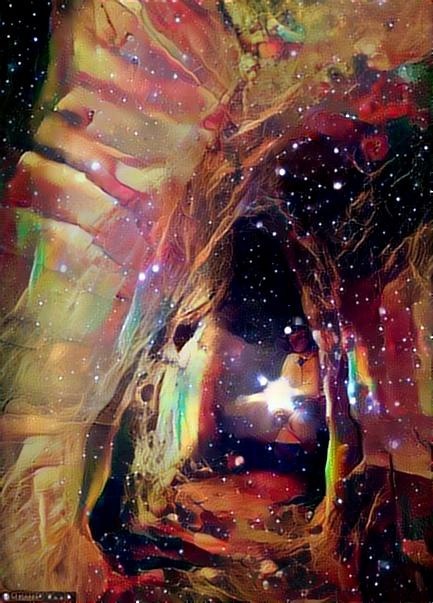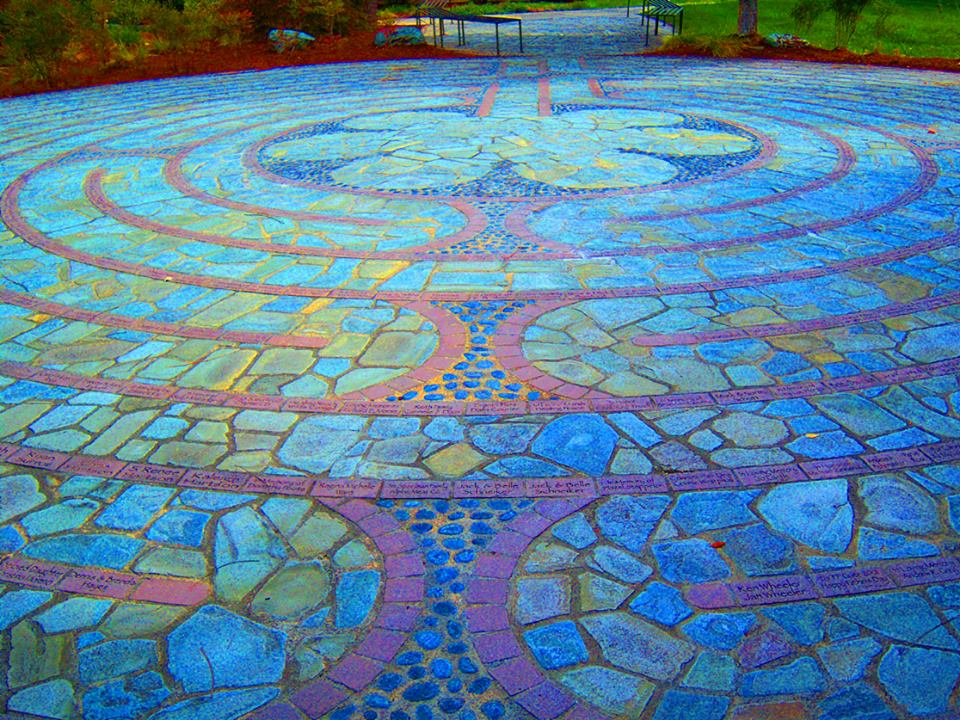https://getd.libs.uga.edu/pdfs/morrison_valerie_m_200808_phd.pdf
The Way It Is
There’s a thread you follow. It goes among
things that change. But it doesn’t change.
People wonder about what you are pursuing.
You have to explain about the thread.
But it is hard for others to see.
While you hold it you can’t get lost.
Tragedies happen; people get hurt
or die; and you suffer and get old.
Nothing you do can stop time’s unfolding.
You don’t ever let go of the thread.
~ William Stafford ~
The Way It Is
There’s a thread you follow. It goes among
things that change. But it doesn’t change.
People wonder about what you are pursuing.
You have to explain about the thread.
But it is hard for others to see.
While you hold it you can’t get lost.
Tragedies happen; people get hurt
or die; and you suffer and get old.
Nothing you do can stop time’s unfolding.
You don’t ever let go of the thread.
~ William Stafford ~
We are not struggling with ways to become superhuman, but with the ways in which we can become more fully human in a deeply connected more-than-human world. This Journey is represented by the Major Arcana sequence of the Tarot, beginning with the Fool. Rather than a Hero’s Journey, it is (more wisely) known as the Fool’s Journey: the pilgrim soul making its rather more humble way through life.
Labyrinth & Midlife
https://conniezweig.com/2015/06/27/meeting-the-shadow-at-midlife/
For the underworld of midlife depression is the ancestral realm and the mythical realm; it is the land of the dead and the land of the dream. As James Hillman says, the underworld is the psyche. An experience of it radically alters our experience of life.
"I thought of a labyrinth of labyrinths, of one sinuous spreading labyrinth that would encompass the past and the future and in some way involve the sars." --Jorge Luis Borges
The middle passage, Katabasis or descent is an archetypal event, a meeting with the daimonic. If a "descent" does not come in initiatory form, it often comes as a dis-ease or ordeal -- as what the Greeks called katabasis. The mark of descent, undertaken consciously or not, is a newly arrived-at lowliness, associated with water and soul, as height is associated with spirit.
The way down and out doesn't require poverty, homelessness, physical deprivation, but it requires a fall from status with emphasis on consciousness of the fall. Katabasis carries the whole concept of disaster, of tragedy; one sees one's own darkside, the dark side of those close to him, and they see yours. Long difficult repentance can be a way of descent, of admitting powerlessness. The descent is a response to the something that wants us there -- the Dark Queen.
But if we can detect footprints on the path, we might learn the stories of those who have gone before and in this way lighten the load. We may uncover the pattern that connects us to the past and to the future. The underworld of midlife depression is the ancestral realm and the mythical realm; it is the land of the dead and the land of the dream. The underworld is the psyche. Our complexes have cores of tremendous emotional power.
"growing in the world, becoming useful to it and contributing to him, requires it to descend into the world that is under the world. In order to be an ancestor, a benefactor, a conservative and a mentor, you must have knowledge of the shadows, being trained by the dead (from the past, which have become invisible and yet continue to reinvigorate our life with their influence). The "Dead" return as ancestors, especially in times of crisis, when we feel lost. Then the dead "is", by offering a deeper knowledge and support. They have already fallen, they know the sinkhole; their extraordinary resources. They do not need to come back literally in the form of voices and visions, because they are already palpable in anything that tends to take us down, on any occasion we do not live up to. They are the gravitational force of the psyche ". (James Hillman)
Labyrinth & Midlife
https://conniezweig.com/2015/06/27/meeting-the-shadow-at-midlife/
For the underworld of midlife depression is the ancestral realm and the mythical realm; it is the land of the dead and the land of the dream. As James Hillman says, the underworld is the psyche. An experience of it radically alters our experience of life.
"I thought of a labyrinth of labyrinths, of one sinuous spreading labyrinth that would encompass the past and the future and in some way involve the sars." --Jorge Luis Borges
The middle passage, Katabasis or descent is an archetypal event, a meeting with the daimonic. If a "descent" does not come in initiatory form, it often comes as a dis-ease or ordeal -- as what the Greeks called katabasis. The mark of descent, undertaken consciously or not, is a newly arrived-at lowliness, associated with water and soul, as height is associated with spirit.
The way down and out doesn't require poverty, homelessness, physical deprivation, but it requires a fall from status with emphasis on consciousness of the fall. Katabasis carries the whole concept of disaster, of tragedy; one sees one's own darkside, the dark side of those close to him, and they see yours. Long difficult repentance can be a way of descent, of admitting powerlessness. The descent is a response to the something that wants us there -- the Dark Queen.
But if we can detect footprints on the path, we might learn the stories of those who have gone before and in this way lighten the load. We may uncover the pattern that connects us to the past and to the future. The underworld of midlife depression is the ancestral realm and the mythical realm; it is the land of the dead and the land of the dream. The underworld is the psyche. Our complexes have cores of tremendous emotional power.
"growing in the world, becoming useful to it and contributing to him, requires it to descend into the world that is under the world. In order to be an ancestor, a benefactor, a conservative and a mentor, you must have knowledge of the shadows, being trained by the dead (from the past, which have become invisible and yet continue to reinvigorate our life with their influence). The "Dead" return as ancestors, especially in times of crisis, when we feel lost. Then the dead "is", by offering a deeper knowledge and support. They have already fallen, they know the sinkhole; their extraordinary resources. They do not need to come back literally in the form of voices and visions, because they are already palpable in anything that tends to take us down, on any occasion we do not live up to. They are the gravitational force of the psyche ". (James Hillman)
“There is a thinking in primordial images, in symbols which are older than the historical man, which are inborn in him from the earliest times, eternally living, outlasting all generations, still make up the groundwork of the human psyche. It is only possible to live the fullest life when we are in harmony with these symbols; wisdom is a return to them.”
--Jung, Modern Man In Search of a Soul
"The deeper layers of the psyche lose their individual uniqueness as they retreat farther and farther into darkness. Lower down; that is to say as they approach the autonomous functional systems, they become increasingly collective until they are universalized and extinguished in the body's materiality, i.e., in chemical substances. The body's carbon is simply carbon. Hence 'at bottom' the psyche is simply “world.”
~Carl Jung, Memories, Dreams and Reflections.
--Jung, Modern Man In Search of a Soul
"The deeper layers of the psyche lose their individual uniqueness as they retreat farther and farther into darkness. Lower down; that is to say as they approach the autonomous functional systems, they become increasingly collective until they are universalized and extinguished in the body's materiality, i.e., in chemical substances. The body's carbon is simply carbon. Hence 'at bottom' the psyche is simply “world.”
~Carl Jung, Memories, Dreams and Reflections.
Russian Icon 'Labyrinth of the Soul'
cosmic labyrinth
The Great Below
Latent Programs
Deep In the Wilderness of the Real: Violence Beyond Belief
It's "sinking in" -- deeper, and deeper down: the news today that a dear friend's son was violently and randomly murdered in a hate-crime attack in Portland, Oregon. A brilliant, courageous young man of great promise and vision, sacrificed needlessly and tragically for bravely and selflessly fighting the Minotaur of ideological violence and personal dysfunction. The pattern is so complex that once inside it is impossible or difficult to escape.
As the Buddhists describe the seed syllable Ho: 'Ho is the courageous pronouncement of the hopelessness which is beyond fear. Ho is the audacious declaration of the fearlessness which is beyond hope. Ho is the extravagant assertion of the continuity of birth and death as a unified experience. Ho is the outrageous avowal that all conditioned perceptions are spontaneously self-liberated in the moment of their arising.'
One of the greatest mysteries, James Hillman believed, is the question of character and destiny. In his bestseller The Soul's Code, he proposed that our calling in life is inborn and that it's our mission in life to realize its imperatives. He called it the "acorn theory" — the idea that our lives are formed by a particular image, just as the oak's destiny is contained in the tiny acorn.
Psychotherapy makes every problem a subjective, inner problem. And that's not where the problems come from. They come from the environment, the cities, the economy, the racism. They come from architecture, school systems, capitalism, exploitation. They come from many places that psychotherapy does not address.
Twists & Turns
Things get too real when someone's deranged imagination and beliefs spill venom and blood in one unforgiving moment. It could have been racial, religious, or gender issues, but all would be just an excuse to exude the kind of hated that only comes about through projection of one's own self-loathing. Bullying gives way to murderous rage, fights for personal vengeance, and delights in cruelty.
Sacred heart vs. Raging gut
Police say the victims were trying to stop Christian from confronting the girls.
“In the midst of his ranting and raving, some people approached him and appeared to try to intervene with his behavior and some of the people that he was yelling at,” police Sgt. Pete Simpson told the Portland newspaper. “They were attacked viciously.”
Christian has had several encounters with the law.
Devastating Rampage
The scene of the crime: On a downtown train... These horrific murders happened in the technological maze of over- and underground train tracks, on public transportation. Not all souls escape the labyrinth wherever it finds us, urban or rural. Before the victim's names were released, the horrific story spread around the world. All of their names had archetypal qualities: Mr. Christian, Mr. Best, Taliesin, Fletcher, and Destinee met at the threshold of chaos and destruction.
We make our destinies but cannot escape our fates: the deranged Christian against Mr Best (veteran and father of four), who's name says it all, and Taliesin, with his magical spirit -- good men and defenders of justice. The moral war has come to our doorsteps; it is always here, as a gracious friend reminded me.
And now his family must carry the burden of loss over the egregious impulsive behavior and brutality of a savage stranger -- a sociopath. "Sinking in" - likewise shocked and dragged down into the convoluted depths of the underworld of mindless destruction and deviance, The labyrinthine world of monsters and their convoluted nightmarish behavior is armed with madness lacking empathy and conscience. Both myth and mental illness can be mindlessly destructive -- a wasteland.
Champions of Justice
"Two men are being hailed as heroes after they were killed while trying to stop a man from abusing two young women... " Small to no consolation to his mother that he has now become a hero, sacrificed in the worst way imaginable. Depressed, to the bottom of existential being, dragged down into the depths of mourning and madness, an initiation by cosmic horror.
In Transit
Portland Mayor Ted Wheeler paid tribute to the train victims for “doing the right thing, standing up for people they didn’t know against hatred.” “Their actions were brave and selfless, and should serve as an example and inspiration to us all,” he said. “They are heroes.”
In myth, the bard Taliesin is associated with King Bran and King Arthur. Chapel Perilous is a metaphorical state that exposes a person to information that disagrees with their perception of reality. It could be spiritual, philosophical, social or even physical. Taking a stand one enters the foreboding chapel. Chapel Perilous is found on the detour to moral obligation.
Once you cross the threshold of Chapel Perilous, there is no going back. Sir Thomas Malory wrote of chapel perilous in Le Morte d'Arthur (1485). The setting is the challenging wasteland of injustice along the way to the Mystery, a final rite of passage to pure spirit.
In Portland, it took a collision of the spiritual and pathological worlds as stark physical reality -- blood on the tracks. In an instant, ordinary life takes on the canvas of heroic proportions with a throng of characters as events ripple outward.
Vortex of Chaos
Everything you fear is waiting with slavering jaws in Chapel Perilous, including serious crazy shit. Traditionally, the Chapel Perilous or Grail Castle has been the ultimate destination for knights questing after the Holy Grail. But it is also that instant of life-changing events that impinge, even instantaneously, on us from the environment.
Those who entered were typically subjected to rigorous challenges, while others are ultimate tests of purity, conviction, and understanding. It is not a failure to die in the labyrinth as a hero in a transpersonal drama, a condensation of the ideological battles of our time.
Chapel Perilous has a cemetery. Passing through also takes luck. These heroes remind us it is up to mankind to construct our own salvation from ignorance, violence, and malevolence -- self-destructive, small-minded malice. So, we abide, holding vigil in the Chapel, that virtual architectural trickster.
Once you cross the threshold of Chapel Perilous, there is no going back... for to enter this portal, the theater of the absurd is to enter into the realm of magic, meaningful coincidence and synchronicity. Here the laws of common sense do not apply. Chapel Perilous is guarded by that ancient trickster... Fate. Should you proceed... you have been warned.
James Hillman said, ” . . . dying is an integral part of the rebirth fantasy.” When things fall apart, they open new meaning. Experience of ego obliteration is not mediated by the human self, but by the metaphysical Reality itself—the human ego is simply the recipient of obliteration. Soul-making is ultimately accomplished by the archetypal gods behind the myths which work in and on the human personality.
In Memorium
“Taliesin (meaning shining brow) Myrddin lived a joyous and full life. His enthusiasm was infectious. We lost him in a senseless act that brought close to home the insidious rift of prejudice and intolerance that is too familiar, too common,” the statement reads. “He was resolute in his conduct and respect of all people. In his final act of bravery, he held true to what he believed is the way forward. He will live in our hearts forever as the just, brave, loving, hilarious and beautiful soul he was. We ask that in honor of his memory, we use this tragedy as an opportunity for reflection and change. We choose love. Safe journey Taliesin. We love you.”
https://www.theguardian.com/us-news/2017/may/27/man-shouting-anti-muslim-slurs-fatally-stabs-two-men-in-us
http://katu.com/news/local/mother-identifies-23-year-old-son-as-max-stabbing-victim
Deep In the Wilderness of the Real: Violence Beyond Belief
It's "sinking in" -- deeper, and deeper down: the news today that a dear friend's son was violently and randomly murdered in a hate-crime attack in Portland, Oregon. A brilliant, courageous young man of great promise and vision, sacrificed needlessly and tragically for bravely and selflessly fighting the Minotaur of ideological violence and personal dysfunction. The pattern is so complex that once inside it is impossible or difficult to escape.
As the Buddhists describe the seed syllable Ho: 'Ho is the courageous pronouncement of the hopelessness which is beyond fear. Ho is the audacious declaration of the fearlessness which is beyond hope. Ho is the extravagant assertion of the continuity of birth and death as a unified experience. Ho is the outrageous avowal that all conditioned perceptions are spontaneously self-liberated in the moment of their arising.'
One of the greatest mysteries, James Hillman believed, is the question of character and destiny. In his bestseller The Soul's Code, he proposed that our calling in life is inborn and that it's our mission in life to realize its imperatives. He called it the "acorn theory" — the idea that our lives are formed by a particular image, just as the oak's destiny is contained in the tiny acorn.
Psychotherapy makes every problem a subjective, inner problem. And that's not where the problems come from. They come from the environment, the cities, the economy, the racism. They come from architecture, school systems, capitalism, exploitation. They come from many places that psychotherapy does not address.
Twists & Turns
Things get too real when someone's deranged imagination and beliefs spill venom and blood in one unforgiving moment. It could have been racial, religious, or gender issues, but all would be just an excuse to exude the kind of hated that only comes about through projection of one's own self-loathing. Bullying gives way to murderous rage, fights for personal vengeance, and delights in cruelty.
Sacred heart vs. Raging gut
Police say the victims were trying to stop Christian from confronting the girls.
“In the midst of his ranting and raving, some people approached him and appeared to try to intervene with his behavior and some of the people that he was yelling at,” police Sgt. Pete Simpson told the Portland newspaper. “They were attacked viciously.”
Christian has had several encounters with the law.
Devastating Rampage
The scene of the crime: On a downtown train... These horrific murders happened in the technological maze of over- and underground train tracks, on public transportation. Not all souls escape the labyrinth wherever it finds us, urban or rural. Before the victim's names were released, the horrific story spread around the world. All of their names had archetypal qualities: Mr. Christian, Mr. Best, Taliesin, Fletcher, and Destinee met at the threshold of chaos and destruction.
We make our destinies but cannot escape our fates: the deranged Christian against Mr Best (veteran and father of four), who's name says it all, and Taliesin, with his magical spirit -- good men and defenders of justice. The moral war has come to our doorsteps; it is always here, as a gracious friend reminded me.
And now his family must carry the burden of loss over the egregious impulsive behavior and brutality of a savage stranger -- a sociopath. "Sinking in" - likewise shocked and dragged down into the convoluted depths of the underworld of mindless destruction and deviance, The labyrinthine world of monsters and their convoluted nightmarish behavior is armed with madness lacking empathy and conscience. Both myth and mental illness can be mindlessly destructive -- a wasteland.
Champions of Justice
"Two men are being hailed as heroes after they were killed while trying to stop a man from abusing two young women... " Small to no consolation to his mother that he has now become a hero, sacrificed in the worst way imaginable. Depressed, to the bottom of existential being, dragged down into the depths of mourning and madness, an initiation by cosmic horror.
In Transit
Portland Mayor Ted Wheeler paid tribute to the train victims for “doing the right thing, standing up for people they didn’t know against hatred.” “Their actions were brave and selfless, and should serve as an example and inspiration to us all,” he said. “They are heroes.”
In myth, the bard Taliesin is associated with King Bran and King Arthur. Chapel Perilous is a metaphorical state that exposes a person to information that disagrees with their perception of reality. It could be spiritual, philosophical, social or even physical. Taking a stand one enters the foreboding chapel. Chapel Perilous is found on the detour to moral obligation.
Once you cross the threshold of Chapel Perilous, there is no going back. Sir Thomas Malory wrote of chapel perilous in Le Morte d'Arthur (1485). The setting is the challenging wasteland of injustice along the way to the Mystery, a final rite of passage to pure spirit.
In Portland, it took a collision of the spiritual and pathological worlds as stark physical reality -- blood on the tracks. In an instant, ordinary life takes on the canvas of heroic proportions with a throng of characters as events ripple outward.
Vortex of Chaos
Everything you fear is waiting with slavering jaws in Chapel Perilous, including serious crazy shit. Traditionally, the Chapel Perilous or Grail Castle has been the ultimate destination for knights questing after the Holy Grail. But it is also that instant of life-changing events that impinge, even instantaneously, on us from the environment.
Those who entered were typically subjected to rigorous challenges, while others are ultimate tests of purity, conviction, and understanding. It is not a failure to die in the labyrinth as a hero in a transpersonal drama, a condensation of the ideological battles of our time.
Chapel Perilous has a cemetery. Passing through also takes luck. These heroes remind us it is up to mankind to construct our own salvation from ignorance, violence, and malevolence -- self-destructive, small-minded malice. So, we abide, holding vigil in the Chapel, that virtual architectural trickster.
Once you cross the threshold of Chapel Perilous, there is no going back... for to enter this portal, the theater of the absurd is to enter into the realm of magic, meaningful coincidence and synchronicity. Here the laws of common sense do not apply. Chapel Perilous is guarded by that ancient trickster... Fate. Should you proceed... you have been warned.
James Hillman said, ” . . . dying is an integral part of the rebirth fantasy.” When things fall apart, they open new meaning. Experience of ego obliteration is not mediated by the human self, but by the metaphysical Reality itself—the human ego is simply the recipient of obliteration. Soul-making is ultimately accomplished by the archetypal gods behind the myths which work in and on the human personality.
In Memorium
“Taliesin (meaning shining brow) Myrddin lived a joyous and full life. His enthusiasm was infectious. We lost him in a senseless act that brought close to home the insidious rift of prejudice and intolerance that is too familiar, too common,” the statement reads. “He was resolute in his conduct and respect of all people. In his final act of bravery, he held true to what he believed is the way forward. He will live in our hearts forever as the just, brave, loving, hilarious and beautiful soul he was. We ask that in honor of his memory, we use this tragedy as an opportunity for reflection and change. We choose love. Safe journey Taliesin. We love you.”
https://www.theguardian.com/us-news/2017/may/27/man-shouting-anti-muslim-slurs-fatally-stabs-two-men-in-us
http://katu.com/news/local/mother-identifies-23-year-old-son-as-max-stabbing-victim
The Kinuko Y. Craft, Ombria in Shadow
"If he is to choose the path of magic then he must choose responsibly,
he must know enough about the labyrinth to walk a true path through it."
--Neil Gaiman The Books of Magic : The Invisible Labyrinth (1990)
GROUNDING
Alice In Wonderland vs. The Labyrinth
Alice falls down the rabbithole and stumbles through the labyrinth that is Wonderland to the Queen's Maze. Like Dorothy in Oz, she despairs of finding a way back. Being pulled down the rabbit hole is a trope, a last-ditch scheme with no way out.
The descents of Inanna and Gilgamesh are among the earliest texts of ancient times. In The Matrix, Morpheus says, "You take the red pill; you stay in Wonderland and I show you how deep the rabbit-hole goes." The Greek myth of Theseus informs the sacrificial theme of The Hunger Games.
Intuitive Underground
Inception takes the labyrinth into a constantly-morphng dreamworld. This is the nature of the forces working below the surface of everyday life. Crawling through tunnels, descending underground, and getting stuck in confined spaces are common themes in the physical passage between the mundane and the fantastic.
"I am indeed convinced that creative imagination is the only primordial phenomenon
accessible to us, the real Ground of the psyche, the only immediate reality."
~Carl Jung, Letters Vol. 1, Pages 59-63.
"The spirit shows its effective power only in the reshaping of matter."
~Carl Jung, Letters Vol. 1, Pages 59-63.
Passages
Noumenal reality is an underlying structure that is a vast network. For Kant, phenomena are the appearances, which constitute our experience. Noumena are the (presumed) things themselves, which constitute reality. Noumena are posited objects or events that exist without sense or perception. Kant defended this as unknowable, indescribable, absolute reality, not just appearance.
Passages include regression therapies, prenatal and perinatal psychology, as well as spontaneous regression. Regression therapy focuses on resolving significant past events believed to be interfering with a person's present mental and emotional wellness. We move forward to reclaim the past in a spiral movement, as the foundation for transpersonal development. The numinous is a manifestation of dynamic ground -- wisdom light and fuel for psychic processes.
The challenge is dealing with the primal repression of the pre-egoic consciousness. Dropping ego defenses in therapy can be a terrifying moment, yet one of transformation through identity crisis. We embrace and prioritize woundedness, humanity, and limitations over a quest for perfection, transcendence, and transformation. Shadow is part of the personal submerged unconscious, both person-specific and culture-common. But shadow-ground isn't the ground itself, but how it is seen through alienation.
Michael Washburn describes "regression in the service of transcendence" as a developmental task of midlife. Knowing about this passage helps us persevere. We regress to re-engage the dynamic ground so ego learns to serve the self. The ground is gradually re-discovered and re-integrated. It is redemptive when our vulnerabilities become our strengths. We recapitulate the arc from infancy to adult to regeneration in spirit.
We develop our egos in the first part of life, and establish ourselves in the world with an outward focus. We may lose touch with instinctuality, our affective or emotional life, creative potentials, and spiritual possibilities. Later, we may turn back towards repressed psychic resources. This "dark night of the soul" can be a very long, difficult, and trying period. When we meet such a blank wall, that is the time for active imagination.
We live in the midst of invisible forces whose effects alone we perceive. We move among invisible forms whose actions we very often do not perceive at all, though we may be profoundly affected by them. Hillman describes a calling to descent into psychological darkness with no specific metaphysical objective. Psyche stands alone as having value and purpose apart from any metaphysical system.
A gateway can not be crossed from elsewhere on the real world side. The symbolism suggests the birth canal ("womb of the earth" metaphor). The protagonist repeatedly returns underground in literal, symbolic, and metaphorical ways, crossing the threshold of symbol and substance. Jung called the symbol-forming power of the psyche the transcendent function.
Awareness starts with a call for deepening with a seemingly external event caused by a complex unconscious situation that breaks the daily flow of existence. We enter such cracks in existence on an inner journey that takes us from our usual routes. The solution is the journey, an openness to the unknown, and a resumption of inner focus.
The journey starts before one's arrival or pilgrimage with "the call" to adventure. This call echoes the aeons old theme of the heroic quest -- a pancultural myth of departure and return. Each hero or heroine crosses a threshold into another reality and meets the guardian of that threshold, undergoes symbolic dismemberment (psychic fragmentation, torment) of the personality, journeys through a threatening, unfamiliar world with magical helpers and many tests and trials.
Taking the risk and meeting the challenge, with the grace of spiritual intervention, leads to a sense of atonement, enlargement, freedom. We have to battle our own limitations, press against and transcend our fears, pain and boundaries. But we can return from the journey with the "treasure hard to attain," the elixir of life, a indescribable boon, an "inner marriage," or empowerment.
Our stories have the power to move others. Therefore, part of the larger value of these experiences is sharing the experience letting other know it's OK to take a risk, psychologically and spiritually. Yet the personal details of the visionary experience are for the self alone, and telling them may dissipate the transformative quality contained in their essence.
The psychological pilgrimage is our deeper destiny. We must risk failure and face ourselves to grow. Life is not free of contrasts, folds, and standstills. There are failures, and more blocks than successes. They teach us what is important about life: individuality, ourselves, and inner strength.
The labyrinth and sarcophagus is a typical symbol of the second portion of the hero's journey, which begins after "crossing the threshold." Once across, the hero is swallowed by the unknown, be it a whale, a wolf, a sarcophagus, or a cave.
This stage permits us to dissolve our identity in order to be rewoven into a stronger and brighter form. It is like the serpent sloughing off its old skin to form a new, fresh identity. We die to our modernity and are reborn to our eternity. It can take the form of a depression or a regression in the service of transcendence, or a strong need to get away from it all.
"I thought that I had found my way to the center of the Invisible Labyrinth; and I had — perhaps — discovered no more than the entrance. Watch my dust.... There is no walking backwards, and I am lost in the Labyrinth Invisible. I cannot retrace my steps. I wrote my name on the wall of the Invisible Labyrinth. I was so diligent in my studies; gave my whole time and heart to the pursuit. I wrote my name but I can find it no longer; My ashes blow like dust around the Invisible Labyrinth." --Neil Gaiman in The Books of Magic : The Invisible Labyrinth (1999)
"There's no need to build a labyrinth when the entire universe is one.
The minotaur more than justifies the existence of the labyrinth."
Jorge Luis Borges, "Ibn-Hakim Al-Bokhari, Murdered in His Labyrinth",
in The Aleph (1949); tr. Andrew Hurley, Collected Fictions (1998)
Neuroscience and Consciousness Studies search for the roots of consciousness and quantum theorists postulate its origins. But the cultural construction of 'consciousness' is a fabrication of subjective mind, which can only produce the distortions of a hall of mirrors.
"What if all this theory’s the equivalent of nightmare,
its menace masquerading as philosophy? ...
wouldn’t anything I’d come up with have to be a monstrous mix of substance and intention?"
--C. K. Williams, “The Method,” in A Dream of Mind, 1992, pp. 63-4
"The shadow is a tight passage, a narrow door, whose painful constriction no one is spared who goes down to the deep well. But one must learn to know oneself in order to know who one is. For what comes after the door is, surprisingly enough, a boundless expanse full of unprecedented uncertainty, with apparently no inside and no outside, no above and no below, no here and no there, no mine and no thine, no good and no bad. It is the world of water, where all life floats in suspension; where the realm of the sympathetic system, the soul of everything living, begins; where I am indivisibly this and that; where I experience the other in myself and the other-than-myself experiences me." ~Jung, CW 9i, Para 45
"Just as a man has a body which is no different in principle from that of an animal, so also his psychology has a whole series of lower storeys in which the spectres from humanity's past epochs still dwell, when the animal souls from the age of Pithecanthropus and the hominids, then the "psyche" of the cold-blooded saurians, and, deepest down of all, the transcendental mystery and paradox of the sympathetic and parasympathetic psychoid systems."
~Jung, CW 14, Para 279
"The very primitive animal layers are supposed to be inherited through the sympathetic system, and the relatively later animal layers belonging to the vertebrate series are represented by the cerebrospinal system." ~Jung, 1925 Seminar, Page 140
"If he is to choose the path of magic then he must choose responsibly,
he must know enough about the labyrinth to walk a true path through it."
--Neil Gaiman The Books of Magic : The Invisible Labyrinth (1990)
GROUNDING
Alice In Wonderland vs. The Labyrinth
Alice falls down the rabbithole and stumbles through the labyrinth that is Wonderland to the Queen's Maze. Like Dorothy in Oz, she despairs of finding a way back. Being pulled down the rabbit hole is a trope, a last-ditch scheme with no way out.
The descents of Inanna and Gilgamesh are among the earliest texts of ancient times. In The Matrix, Morpheus says, "You take the red pill; you stay in Wonderland and I show you how deep the rabbit-hole goes." The Greek myth of Theseus informs the sacrificial theme of The Hunger Games.
Intuitive Underground
Inception takes the labyrinth into a constantly-morphng dreamworld. This is the nature of the forces working below the surface of everyday life. Crawling through tunnels, descending underground, and getting stuck in confined spaces are common themes in the physical passage between the mundane and the fantastic.
"I am indeed convinced that creative imagination is the only primordial phenomenon
accessible to us, the real Ground of the psyche, the only immediate reality."
~Carl Jung, Letters Vol. 1, Pages 59-63.
"The spirit shows its effective power only in the reshaping of matter."
~Carl Jung, Letters Vol. 1, Pages 59-63.
Passages
Noumenal reality is an underlying structure that is a vast network. For Kant, phenomena are the appearances, which constitute our experience. Noumena are the (presumed) things themselves, which constitute reality. Noumena are posited objects or events that exist without sense or perception. Kant defended this as unknowable, indescribable, absolute reality, not just appearance.
Passages include regression therapies, prenatal and perinatal psychology, as well as spontaneous regression. Regression therapy focuses on resolving significant past events believed to be interfering with a person's present mental and emotional wellness. We move forward to reclaim the past in a spiral movement, as the foundation for transpersonal development. The numinous is a manifestation of dynamic ground -- wisdom light and fuel for psychic processes.
The challenge is dealing with the primal repression of the pre-egoic consciousness. Dropping ego defenses in therapy can be a terrifying moment, yet one of transformation through identity crisis. We embrace and prioritize woundedness, humanity, and limitations over a quest for perfection, transcendence, and transformation. Shadow is part of the personal submerged unconscious, both person-specific and culture-common. But shadow-ground isn't the ground itself, but how it is seen through alienation.
Michael Washburn describes "regression in the service of transcendence" as a developmental task of midlife. Knowing about this passage helps us persevere. We regress to re-engage the dynamic ground so ego learns to serve the self. The ground is gradually re-discovered and re-integrated. It is redemptive when our vulnerabilities become our strengths. We recapitulate the arc from infancy to adult to regeneration in spirit.
We develop our egos in the first part of life, and establish ourselves in the world with an outward focus. We may lose touch with instinctuality, our affective or emotional life, creative potentials, and spiritual possibilities. Later, we may turn back towards repressed psychic resources. This "dark night of the soul" can be a very long, difficult, and trying period. When we meet such a blank wall, that is the time for active imagination.
We live in the midst of invisible forces whose effects alone we perceive. We move among invisible forms whose actions we very often do not perceive at all, though we may be profoundly affected by them. Hillman describes a calling to descent into psychological darkness with no specific metaphysical objective. Psyche stands alone as having value and purpose apart from any metaphysical system.
A gateway can not be crossed from elsewhere on the real world side. The symbolism suggests the birth canal ("womb of the earth" metaphor). The protagonist repeatedly returns underground in literal, symbolic, and metaphorical ways, crossing the threshold of symbol and substance. Jung called the symbol-forming power of the psyche the transcendent function.
Awareness starts with a call for deepening with a seemingly external event caused by a complex unconscious situation that breaks the daily flow of existence. We enter such cracks in existence on an inner journey that takes us from our usual routes. The solution is the journey, an openness to the unknown, and a resumption of inner focus.
The journey starts before one's arrival or pilgrimage with "the call" to adventure. This call echoes the aeons old theme of the heroic quest -- a pancultural myth of departure and return. Each hero or heroine crosses a threshold into another reality and meets the guardian of that threshold, undergoes symbolic dismemberment (psychic fragmentation, torment) of the personality, journeys through a threatening, unfamiliar world with magical helpers and many tests and trials.
Taking the risk and meeting the challenge, with the grace of spiritual intervention, leads to a sense of atonement, enlargement, freedom. We have to battle our own limitations, press against and transcend our fears, pain and boundaries. But we can return from the journey with the "treasure hard to attain," the elixir of life, a indescribable boon, an "inner marriage," or empowerment.
Our stories have the power to move others. Therefore, part of the larger value of these experiences is sharing the experience letting other know it's OK to take a risk, psychologically and spiritually. Yet the personal details of the visionary experience are for the self alone, and telling them may dissipate the transformative quality contained in their essence.
The psychological pilgrimage is our deeper destiny. We must risk failure and face ourselves to grow. Life is not free of contrasts, folds, and standstills. There are failures, and more blocks than successes. They teach us what is important about life: individuality, ourselves, and inner strength.
The labyrinth and sarcophagus is a typical symbol of the second portion of the hero's journey, which begins after "crossing the threshold." Once across, the hero is swallowed by the unknown, be it a whale, a wolf, a sarcophagus, or a cave.
This stage permits us to dissolve our identity in order to be rewoven into a stronger and brighter form. It is like the serpent sloughing off its old skin to form a new, fresh identity. We die to our modernity and are reborn to our eternity. It can take the form of a depression or a regression in the service of transcendence, or a strong need to get away from it all.
"I thought that I had found my way to the center of the Invisible Labyrinth; and I had — perhaps — discovered no more than the entrance. Watch my dust.... There is no walking backwards, and I am lost in the Labyrinth Invisible. I cannot retrace my steps. I wrote my name on the wall of the Invisible Labyrinth. I was so diligent in my studies; gave my whole time and heart to the pursuit. I wrote my name but I can find it no longer; My ashes blow like dust around the Invisible Labyrinth." --Neil Gaiman in The Books of Magic : The Invisible Labyrinth (1999)
"There's no need to build a labyrinth when the entire universe is one.
The minotaur more than justifies the existence of the labyrinth."
Jorge Luis Borges, "Ibn-Hakim Al-Bokhari, Murdered in His Labyrinth",
in The Aleph (1949); tr. Andrew Hurley, Collected Fictions (1998)
Neuroscience and Consciousness Studies search for the roots of consciousness and quantum theorists postulate its origins. But the cultural construction of 'consciousness' is a fabrication of subjective mind, which can only produce the distortions of a hall of mirrors.
"What if all this theory’s the equivalent of nightmare,
its menace masquerading as philosophy? ...
wouldn’t anything I’d come up with have to be a monstrous mix of substance and intention?"
--C. K. Williams, “The Method,” in A Dream of Mind, 1992, pp. 63-4
"The shadow is a tight passage, a narrow door, whose painful constriction no one is spared who goes down to the deep well. But one must learn to know oneself in order to know who one is. For what comes after the door is, surprisingly enough, a boundless expanse full of unprecedented uncertainty, with apparently no inside and no outside, no above and no below, no here and no there, no mine and no thine, no good and no bad. It is the world of water, where all life floats in suspension; where the realm of the sympathetic system, the soul of everything living, begins; where I am indivisibly this and that; where I experience the other in myself and the other-than-myself experiences me." ~Jung, CW 9i, Para 45
"Just as a man has a body which is no different in principle from that of an animal, so also his psychology has a whole series of lower storeys in which the spectres from humanity's past epochs still dwell, when the animal souls from the age of Pithecanthropus and the hominids, then the "psyche" of the cold-blooded saurians, and, deepest down of all, the transcendental mystery and paradox of the sympathetic and parasympathetic psychoid systems."
~Jung, CW 14, Para 279
"The very primitive animal layers are supposed to be inherited through the sympathetic system, and the relatively later animal layers belonging to the vertebrate series are represented by the cerebrospinal system." ~Jung, 1925 Seminar, Page 140
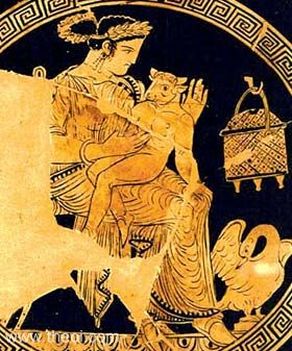
The Pasiphae Mosaic in Zeugma (Turkey) covers nearly 800 Square feet of the floor of a huge meeting hall of a Roman Villa from Zeugma (Turkey). It represents the myth of Queen Pasiphaé (sitting on her throne). She was daughter of Helios and wife of King Minos. The Greeks were a very patriarchical culture that didn't really like the Minoans: Pasiphae - Sister of the beautiful and wicked Enchantress Circe (who once had changed Odysseus comrades into hogs) - was given as spouse to King of Crete Minos. For some obscure reason, she or Minos angered Poseidon who cursed the Queen to fall in lust with a White Bull belonging to the King. The Queen hired the King's Engineer in Chief Daedalus to assist in her endeavor to be coupled to the Bull. With the help of his son and apprentice Icarus, Daedalos built a hollow wooden cow, wrapped in a bovine skin and endowed with mechanical life. Hiding inside this contraption the Queen was able to copulate with the Bull. From their unusual union she conceived and bore the hybrid bull-headed child Asterion, also called Minotauros by the Greeks. http://mosaicblues.blogspot.com/2015/04/the-pasiphae-mosaic-in-zeugma-turkey.html
“There is no top or bottom, no absolute positioning in space. There are only positions that are relative to the others. There is an incessant change in the relative positions throughout the universe and the observer is always at the centre".” ― Giordano Bruno
.
GROUND ZERO
Death-Rebirth is a Metaphor of Dream-Awakening
Iona Miller, 2017
"In ancient times on mountainous Crete they say
The Labyrinth, between walls in the dark,
Ran criss-cross a bewildering thousand ways
Devised by guile, a maze insoluble,
Breaking down every clue to the way out."
--Virgil, The Aeneid
We all exist on the foundation of something we do not know -- the substrate of human consciousness, accrued over millions of years. We know we are born, exist, and are carried along. In this sense the environment is the Holy Grail. The Great Below, the underworld kingdom, can call or bellow its demands of us.
Jung says, "We can only rise above nature if somebody else carries the weight of the earth for us. . . .The dark weight of the earth must enter into the picture of the whole. In “this world” there is no good without its bad, no day without its night, no summer without its winter." (Psychology and Religion, Pages 178-179) Consciousness harbors a secret prideful fear it may lose its ascendancy to numinous forces and events beyond its control.
What is this invisible ground whose image we carry in our souls where spiritual ideals merge with worldly realities? Isn’t it always right here, right now everywhere always forever? The contextual background, the invisible environment, is the fundamental ground from which both mind and matter emerge, the luminous absolute space of reality which transcends the mere absence of energy/matter. Archetypes are latent structures embedded in psyche.
Lower Bounds of Desire
Learning to integrate our two- to four-million year old origins is a transgenerational process. This two-million year old self abides within the dark subterranean labyrinth of the psyche, the blackness of the primeval underworld in this prehistoric archetypal world. This world can consume and even break us. So can subconscious influences.
Subterranean Existence
Depth psychology shows us that inside each human is another kind of human being than our superficial personality. We can't revive ancient traditions on purpose, but they continue going on underground, in the archaic psyche. We are all inducing it as well as perceiving the realm of subterranean mysteries and concealed creatures. They creep through a million clandestine channels.
Sub-Plot
Our dark-adapted eye sees from a subterranean point of view and the unconscious or unacknowledged development of ideas. Things look different from the inside than outside.
Closely connected sensations correspond to basic bodily needs with their instinctual tendencies and determined reactions. Collective instinctual knowledge silently drives our actions, including "high voltage" powerful energy running through and out of the body, with no control over when this feeling comes or how long it stays or galvanizing indiscriminate violence.
When we confront the subterranean unconscious, we navigate the mysterious, sometimes perilous, depths of the primordial psyche. Unbound desires, basic drives anchored in the satisfaction of core bodily needs and related to a capacity for pleasure and displeasure. Projection through a maze of archetypes and complexes is a basic natural process.
Yet, intensity of pleasure can be dissociated from intensity of desire as in addiction. Non-conceptual representations can be bound to sensory states. They create the same kinds of emotions, motivational-style, content, intentional systems, decision-making, and impulses as belief and ideology. It takes heart to work on the images imprisoned within us.
Chthonic Underground
An abode of oracles, this labyrinth is the ground of our beliefs and inherent divinatory power, subterranean connections, expectations and explanations. Dying is the descent (katabasis) into subterranean caverns, vaults, dark temples, the underworld, hell, the sea. There is transformative power in the subterranean structures of the psyche.
Today's connective thread can be seen as the finely-wrought double helix of our DNA with its epigenetic memory, a timeless labyrinth of multidimensional symbols transcending language. Yes, there's genetics, chromosomes, biology. Yes, there are environment, sociology, parenting, economics, class, etc. But there is also something else. Our challenge is to stay attached to that invisible thread.
Myth is psychically and biologically encoded in the human psyche. Wholeness, psycho-spiritual integration, is anticipated in psyche by by spontaneously arising autonomous symbols, including mandala structures in dreams, liminal, and ordinary life. Inner and outer events affect one another reciprocally. The groundstate of all phenomena is the empty luminous substrate of awareness -- vacuity imbued with clarity.
The labyrinth is an enduring myth telling the political story of the triumph of Athens over the goddess culture of Crete. But the symbol is a feminine cave, a Void. The space between is the channel through which the stream of images flows, and a psychological threshold. The ancient ritual dances with masks and drums remain alive in our bones when we tune in to our instinctual selves.
The labyrinth embodies and incorporates sex, death, religion, identity, mythology and altered states, We all have an androgynous nature, rooted in antiquity, It contains a powerful message for our own time. It is the creative edge between order and chaos, difference and indifference, negentropy and entropy, information and noise, alienation or isolation in the self, and security in self-knowledge or self-perpetuation.
As a phenomenon of living bodies, it is an aspect of matter. The labyrinth symbolizes our arduous endeavor of searching for ways to decipher the hieroglyphic tissue of reality beyond self-illusion. The archetype has a universal influence expressed in a multitude of naturally generated forms.
Our descent into the labyrinth mimics the descent of the dead and discovery of the sacred as well as the dark, violent depths in man, or as a symbol for time itself. It is a subterranean undermining of ordinary life. The journey to the center is symbolic of the mystic return to the womb; search for meaning, for identity, and a place, however sepulchral, of belonging. Thus, in the Ordeal by Labyrinth, we repeat old patterns in behavior or images in new ways that make them tangible.
The creative source is expressed in many cultural manifestations. The labyrinth becomes metaphysical as a means of 'knowing how we know.' This site is interstitial," -- the edge between divine and human, sacred and profane, supernatural and natural, I and Thou, I and the other, endless torture and liberation. On the other hand, there is no escaping the labyrinth.
We are trapped externally and internally, through experience and the telling of it. Even the act of narration itself is seen as labyrinthine. Living in the maze, we may suffer intellectual confusions and moral delusions. The prison punishes a monstrous sin, affecting all those living in its shadow.
The ambiguous metaphor metaphor suggests disorientation of the mind or of ideas and the idea of permanence and of eternal ‘being’. images of imprisonment in a labyrinthine underworld represent the threat of madness. Perhaps living too much in the now disconnects us from the subconscious, from the irrational. You connect through your dreams -- the eye through which you see the world, the universe.
Inside a labyrinth our perspective can alter dramatically with optical illusions. The intricate windings are also a metaphor for our labyrinthine defenses, sometimes symbolized as a castle or fortified city (Jerusalem, Troy, Knossos, Constantinople, Jericho, Babylon, Scimangada/Simraongarh). (Lundén) http://www.labyrinthos.net/C26%20Nepalese%20Labyrinth.pdf
Tragic Drama
As in archaic times, labyrinths guarded tombs and temples as the center of Life, Death, and Renewal Mysteries. Vitality and immortality were linked with the sublimity and dignity of dead ancestors. Even if the full radiance of the whispering dead comes very close, they are still lost in the infinite. Motivation for the descent is not about death itself but about the renewal of life through contact with the ancestors. Our own inner problems are dramatically expressed.
Symbols are forever recreating themselves anew in our imaginations. The spiral or double spiral is often found at entrances and exits to caves, graves, temples, and other sacred enclosures. It suggests that an untensed initiatory experience of an inward nature must also find its way outward again, despite the confusion, anxiety, and peril to conscious orientation that this involves.
"The Cretan labyrinth was inhabited by the Minotaur, a monster that was half man and half bull, the offspring of the Minoan mother goddess Pasiphaë and a sacred bull. Nevertheless, there is always a sense that the positive creative aspect of the maternal principle lies inherent in the central symbol, as a circle of containment to which the initiate must submit as if losing himself and then transcend by reemerging renewed." (ARAS)
Paradoxically, by exploring the collective psyche we become more individual and individuated. Jung said, "there is no outside to the collective psyche." So we are in it; immersed in it, consciously or unconsciously. Psychologically, we carry it within us.
Passion & Danger
We are drawn into the abyss. The labyrinth as a dark realm of interlinked passages, physical or reflected, is there to attract as a complex puzzle, but it creates fear,
uncertainty, insecurity, even danger. It is a primordial evocative image of many things, including containment of the Minotaur within. It also contains the primordial feminine and earthy-cosmic nature, depicted as uncontrolled passion that is as dangerous as fire in ancient texts.
Yet, this undiscovered vein contains the living psyche connected to the arcanum of matter -- projection of the psychic integration process. The mandala is an image of nature's cycle of formation, transformation, and regeneration.
We fear the unknown, the unconscious, and most of all death. In the descent we explore life through the lens of death. It is traumatic to even contemplate our own death -- the impermanence of life. When broken, sometimes we break through into another dimension of the psyche.
The self has a metaphorical existence in the labyrinth of time. Petrarch specialized in existential experiences of paradox, impasse. and dead ends -- a labyrinth of 'no passage.'
In The Aeneid, Virgil the Roman master poet describes the labyrinth carved over the gates of Hades.
Dante's Inferno crossed that threshold in a deep dive descent winding away from the light. "Suffering the opposite" is a punishment of souls. Dante entered the infernal labyrinth as another Theseus. Dante and Virgil encounter the Minotaur in the circle of violence.
James Joyce echoed the builder of the labyrinth with his alter ego character Stephen Dedalus, mirroring his mythological namesake, Daedalus. Stephen's surname may reflect the labyrinthine quality of his developmental journey in Portrait of the Artist as a Young Man. The name "Dedalus" also suggests a desire to "fly" above the constraints of religion, nationality, and politics in his own development.
More than once, Daedalus creates something that has subsequent negative consequences. The monstrous Minotaur's almost impenetrable Labyrinth made slaying the beast very difficult. In The Metamorphoses (VIII:183-235) Ovid describes his imprisonment in a tower to prevent his knowledge of the labyrinth from spreading to the public.
The psychophysical significance of the dark and lonely labyrinth of the fathomless abyss is as an archetypal symbol of the psyche, the quest, and Jung's individuation process -- the ambiguous Way within us.
Wholeness helps us supersede self-deceptions. The universe within and without are equivalent. When we seek the inner life we encounter the labyrinth. There we develop our second sight, a dark-adapted eye. Clarity comes when we look deeply into our hearts. The instinctual is an intuitive path.
What sets it apart is this archetype has a physical presence, harking back to early cave life. In other versions, a fierce dragon guards the treasure hard to attain in the depths of its lair. The center is the Eternal Now, which is how the labyrinth works as more than a metaphor, beyond space-time.
The uncertainties of the labyrinth can be approached unconsciously, therapeutically, or sacramentally, since it embodies all those dynamics. It is a frame for synchronistic occurrences, connecting together diverse symbolism tying psyche and matter together. Jung noted in his Red Book that, "Depths and surface should mix so that new life can develop. Yet the new life does not develop outside of us, but within us." (Page 239)
How do we proceed inside this labyrinth of life with its endless passageways and complex crossroads which force us to make hard choices to escape the present, the path to self-knowledge, or the bewildering haze of illusions? We lose control between will and instinct, surrendering to pure chance ans pure irrationality.
The field of soul is a field of influence. Outside we are an objective material body, but inside we are subjective dynamic imagery, an inner cosmos. There are both inner and outer events and experiences. Our internal experience of the body and environment is psyche, or soul.
We create from within ourselves, the deeper aspect of matter. Psyche emerges from biological imperatives. The prima materia, or raw material of transformation, is the blackness of the biological and instinctual ground of the human psyche.
Biology can play a big role in impulse control, behavior, mood disorders, and dysregulation. The abyss and the labyrinth represent situations of extreme spiritual discomfort. In our thirst for meaning we are drawn inexorably down the fearful path to truth and self-knowledge.
Even the obsessive search for love, beauty, or perfection, can lead to total isolation from
the ‘real’ world, the world of ordinary people. Sometimes we surrender our rationality or will to a compulsion or obsession which is stronger than the pull of life.
The labyrinth is a reality tunnel of our own projections. Threading the labyrinth gives us a perspective greater than personality. Here we find inner meaning, our vocation, and where we stand on issues and heartfelt values. When we follow the right path of labyrinthine physical reality, in the same way as psychoanalysis may help to unravel the passages of tortuous psychic reality.
We see through to a reflection of some inner state, condition or pattern, breaking habits and conditioned response. Our minds and bodies are twisted and turned in that unpredictable, tortuous, serpentine path. Wholeness, receptivity, and authenticity is beyond the personal and complex collective governed by the temporal process of life passages.
We are each a living labyrinth of flesh, bone, dreams, and imagination. Dreams often show us symbolic images of the psyche we deny, repress, or project, including our own authentic being. Attending to dreams reflects the transformation of heart that moves us toward a fuller life. We learn to relate inner and outer events.
Circumambulation
In some ways, the labyrinth is a blueprint or roadmap of the soul -- a way to engage and encounter our deeper self. In this universal theme, Deleuze identifies Ariadne and the thread as the anima. Anima links us to the unconscious with the guiding thread of psyche's inherent wisdom.
Only anima can reconcile us with the unconscious. The labyrinth leads us back recursively to the starting point. This symbol of the eternal return means the labyrinth affirms becoming like Ariadne affirms by the thread.
We experience the non-linear interplay of chance and necessity, being and becoming, multiplicity and unity. We explore nature's operating system and engage the imagistic with the fullness of our being and find our shared wisdom and humanity.
The labyrinth is one of the most powerful symbols of the subconscious, archetype of transformation. We move uncertainly toward the center, the Self, the core of our being and our undiscovered treasure.
But, transformed we must then find our way out of the labyrinth and back to the outer world. We repeat this inward and outward cycle over and over during our lives on higher arcs or spirals. The labyrinth transforms the ordinary world into the backstage of a deep and complex drama set in subterranean confines. This is the path to self-knowledge and actualization of our potential.
Sometimes the real dangers in the depths of the labyrinth can block our way and we may lose ourselves for a time in that hellish way. We've all been more or less traumatized, overwhelmed, confronted with heartbreak and despair. But we also harbor dissociated feelings, unacknowledged terror, and the tyranny of shame around our own inadequacy, defectiveness, and inferiority. Dreams can reveal terror and anxiety and self-loathing.
Such spiritual challenge and specters can be arduous. We may not even know we are caught in a maze or labyrinth of relationships. When we are stuck, we lack self-awareness. The only way out is facing the reality of having to go through. Somehow, we don't know how, along the way we find our integrity and destiny.
We may lose touch, battle our shadow, and feel despair. It is then we need to remember our fragile lifeline, the connective thread, and realize the Feminine (innate Wisdom; intuition; creative imagination) always supports us in our journey through psyche, a new cycle of life and the notion of continuation.
This long and winding road by which we find our unknown way is one of life's most important journeys. It sheds light on the fears, desires and motivations that fuel your world view and behavioral patterns — often unconsciously.
We learn to understand specific relationship dynamics and open to compassion and empathy, for ourselves and others. We come to it not from strength but through weakness of woundedness. We have to confront our own fury, the prison of our own device. Then we don't have to identify with it and inner defenses are dismantled. To do so is destructive to consciousness. Edward Edinger suggested that in defeat the Minotaur meant that the bull “stands for something that must be challenged and shown to be inferior to human power.”
Man-Eating Beast
Theseus found the Minotaur by throwing down Ariadne's ball of thread which unwound itself, leading him in the right direction toward wholeness through the principle of relatedness. This self-propelled ball of thread is metaphorical connective tissue. Its autonomy suggests it is a symbol of individuation -- the opposite of blind destruction.
The portrayal of the Minotaur in Dante’s Inferno is a personification of rage, terror, and a lack of self-control. Dante demonizes the Minotaur by placing him in Hell, and emphasizes his role by associating him directly with Violence. Visual representations of the scene draw on both his physical and temperamental characteristics to create a symbol of man’s bestial nature and his struggle to control it.
The Minotaur is the destructive aspect of the unconscious that demands we sacrifice, especially ego desires. But the inner tyrant needs to relax its agitation and violence. First, we have to see the tyrannical figure, and find some way to make that ingrown anger visible. We repress unsavory or unacceptable parts of ourselves. The shadow contains these rejected parts that haunt our dreams and unconscious lives. What isn't represented personally, is presented transpersonally.
We have to consciously encounter this animalistic force. We escape the labyrinth through its center with our victory of self-understanding and self-compassion which helps us overcome our unregenerate energy that is hidden or repressed in the depths.
This journey to the heart is a multi-dimensional tool -- a journey to the heart of the netherworld. We master such energy with the help of the feminine -- with the thread of feeling relatedness -- human values and meanings. This regeneration of the archetype of the circle carries its own meaning in its form -- our own personal Ground Zero.
The sinuous labyrinth is a healing container where we face our challenges and discover new resources, balancing anxiety, conflict, and uncertainty at a new level of consciousness. Though of different construction the ancient underground labyrinths and medieval ritual mazes, such as Glastonbury Tor Maze, share much in common that renews our souls.
Circuitous Path
Hopefully, we emerge from disorientation a more connected, compassionate, actualized and liberated version of our true selves. We escape the labyrinth through the ascending path of spirituality, centering in our own being, and integration of authentic selfhood that we learn to identify with.
Ego becomes aware of the transpersonal center and submits to it. The long search for this recovery through the trials of initiatory ordeals and death leads to reconnection of conscious and unconscious worlds, the earthly and the spiritual.
“The maze of strange passages, chambers, and unlocked exits in the cellar recalls the old Egyptian representation of the underworld, which is a well-known symbol of the unconscious with its abilities. It also shows how one is “open” to other influences in one’s unconscious shadow side and how uncanny and alien elements can break in.”
--"The Process of Individuation”, M.L. von Franz, Jung’s Man and His Symbols, pg. 176.
GROUND ZERO
Death-Rebirth is a Metaphor of Dream-Awakening
Iona Miller, 2017
"In ancient times on mountainous Crete they say
The Labyrinth, between walls in the dark,
Ran criss-cross a bewildering thousand ways
Devised by guile, a maze insoluble,
Breaking down every clue to the way out."
--Virgil, The Aeneid
We all exist on the foundation of something we do not know -- the substrate of human consciousness, accrued over millions of years. We know we are born, exist, and are carried along. In this sense the environment is the Holy Grail. The Great Below, the underworld kingdom, can call or bellow its demands of us.
Jung says, "We can only rise above nature if somebody else carries the weight of the earth for us. . . .The dark weight of the earth must enter into the picture of the whole. In “this world” there is no good without its bad, no day without its night, no summer without its winter." (Psychology and Religion, Pages 178-179) Consciousness harbors a secret prideful fear it may lose its ascendancy to numinous forces and events beyond its control.
What is this invisible ground whose image we carry in our souls where spiritual ideals merge with worldly realities? Isn’t it always right here, right now everywhere always forever? The contextual background, the invisible environment, is the fundamental ground from which both mind and matter emerge, the luminous absolute space of reality which transcends the mere absence of energy/matter. Archetypes are latent structures embedded in psyche.
Lower Bounds of Desire
Learning to integrate our two- to four-million year old origins is a transgenerational process. This two-million year old self abides within the dark subterranean labyrinth of the psyche, the blackness of the primeval underworld in this prehistoric archetypal world. This world can consume and even break us. So can subconscious influences.
Subterranean Existence
Depth psychology shows us that inside each human is another kind of human being than our superficial personality. We can't revive ancient traditions on purpose, but they continue going on underground, in the archaic psyche. We are all inducing it as well as perceiving the realm of subterranean mysteries and concealed creatures. They creep through a million clandestine channels.
Sub-Plot
Our dark-adapted eye sees from a subterranean point of view and the unconscious or unacknowledged development of ideas. Things look different from the inside than outside.
Closely connected sensations correspond to basic bodily needs with their instinctual tendencies and determined reactions. Collective instinctual knowledge silently drives our actions, including "high voltage" powerful energy running through and out of the body, with no control over when this feeling comes or how long it stays or galvanizing indiscriminate violence.
When we confront the subterranean unconscious, we navigate the mysterious, sometimes perilous, depths of the primordial psyche. Unbound desires, basic drives anchored in the satisfaction of core bodily needs and related to a capacity for pleasure and displeasure. Projection through a maze of archetypes and complexes is a basic natural process.
Yet, intensity of pleasure can be dissociated from intensity of desire as in addiction. Non-conceptual representations can be bound to sensory states. They create the same kinds of emotions, motivational-style, content, intentional systems, decision-making, and impulses as belief and ideology. It takes heart to work on the images imprisoned within us.
Chthonic Underground
An abode of oracles, this labyrinth is the ground of our beliefs and inherent divinatory power, subterranean connections, expectations and explanations. Dying is the descent (katabasis) into subterranean caverns, vaults, dark temples, the underworld, hell, the sea. There is transformative power in the subterranean structures of the psyche.
Today's connective thread can be seen as the finely-wrought double helix of our DNA with its epigenetic memory, a timeless labyrinth of multidimensional symbols transcending language. Yes, there's genetics, chromosomes, biology. Yes, there are environment, sociology, parenting, economics, class, etc. But there is also something else. Our challenge is to stay attached to that invisible thread.
Myth is psychically and biologically encoded in the human psyche. Wholeness, psycho-spiritual integration, is anticipated in psyche by by spontaneously arising autonomous symbols, including mandala structures in dreams, liminal, and ordinary life. Inner and outer events affect one another reciprocally. The groundstate of all phenomena is the empty luminous substrate of awareness -- vacuity imbued with clarity.
The labyrinth is an enduring myth telling the political story of the triumph of Athens over the goddess culture of Crete. But the symbol is a feminine cave, a Void. The space between is the channel through which the stream of images flows, and a psychological threshold. The ancient ritual dances with masks and drums remain alive in our bones when we tune in to our instinctual selves.
The labyrinth embodies and incorporates sex, death, religion, identity, mythology and altered states, We all have an androgynous nature, rooted in antiquity, It contains a powerful message for our own time. It is the creative edge between order and chaos, difference and indifference, negentropy and entropy, information and noise, alienation or isolation in the self, and security in self-knowledge or self-perpetuation.
As a phenomenon of living bodies, it is an aspect of matter. The labyrinth symbolizes our arduous endeavor of searching for ways to decipher the hieroglyphic tissue of reality beyond self-illusion. The archetype has a universal influence expressed in a multitude of naturally generated forms.
Our descent into the labyrinth mimics the descent of the dead and discovery of the sacred as well as the dark, violent depths in man, or as a symbol for time itself. It is a subterranean undermining of ordinary life. The journey to the center is symbolic of the mystic return to the womb; search for meaning, for identity, and a place, however sepulchral, of belonging. Thus, in the Ordeal by Labyrinth, we repeat old patterns in behavior or images in new ways that make them tangible.
The creative source is expressed in many cultural manifestations. The labyrinth becomes metaphysical as a means of 'knowing how we know.' This site is interstitial," -- the edge between divine and human, sacred and profane, supernatural and natural, I and Thou, I and the other, endless torture and liberation. On the other hand, there is no escaping the labyrinth.
We are trapped externally and internally, through experience and the telling of it. Even the act of narration itself is seen as labyrinthine. Living in the maze, we may suffer intellectual confusions and moral delusions. The prison punishes a monstrous sin, affecting all those living in its shadow.
The ambiguous metaphor metaphor suggests disorientation of the mind or of ideas and the idea of permanence and of eternal ‘being’. images of imprisonment in a labyrinthine underworld represent the threat of madness. Perhaps living too much in the now disconnects us from the subconscious, from the irrational. You connect through your dreams -- the eye through which you see the world, the universe.
Inside a labyrinth our perspective can alter dramatically with optical illusions. The intricate windings are also a metaphor for our labyrinthine defenses, sometimes symbolized as a castle or fortified city (Jerusalem, Troy, Knossos, Constantinople, Jericho, Babylon, Scimangada/Simraongarh). (Lundén) http://www.labyrinthos.net/C26%20Nepalese%20Labyrinth.pdf
Tragic Drama
As in archaic times, labyrinths guarded tombs and temples as the center of Life, Death, and Renewal Mysteries. Vitality and immortality were linked with the sublimity and dignity of dead ancestors. Even if the full radiance of the whispering dead comes very close, they are still lost in the infinite. Motivation for the descent is not about death itself but about the renewal of life through contact with the ancestors. Our own inner problems are dramatically expressed.
Symbols are forever recreating themselves anew in our imaginations. The spiral or double spiral is often found at entrances and exits to caves, graves, temples, and other sacred enclosures. It suggests that an untensed initiatory experience of an inward nature must also find its way outward again, despite the confusion, anxiety, and peril to conscious orientation that this involves.
"The Cretan labyrinth was inhabited by the Minotaur, a monster that was half man and half bull, the offspring of the Minoan mother goddess Pasiphaë and a sacred bull. Nevertheless, there is always a sense that the positive creative aspect of the maternal principle lies inherent in the central symbol, as a circle of containment to which the initiate must submit as if losing himself and then transcend by reemerging renewed." (ARAS)
Paradoxically, by exploring the collective psyche we become more individual and individuated. Jung said, "there is no outside to the collective psyche." So we are in it; immersed in it, consciously or unconsciously. Psychologically, we carry it within us.
Passion & Danger
We are drawn into the abyss. The labyrinth as a dark realm of interlinked passages, physical or reflected, is there to attract as a complex puzzle, but it creates fear,
uncertainty, insecurity, even danger. It is a primordial evocative image of many things, including containment of the Minotaur within. It also contains the primordial feminine and earthy-cosmic nature, depicted as uncontrolled passion that is as dangerous as fire in ancient texts.
Yet, this undiscovered vein contains the living psyche connected to the arcanum of matter -- projection of the psychic integration process. The mandala is an image of nature's cycle of formation, transformation, and regeneration.
We fear the unknown, the unconscious, and most of all death. In the descent we explore life through the lens of death. It is traumatic to even contemplate our own death -- the impermanence of life. When broken, sometimes we break through into another dimension of the psyche.
The self has a metaphorical existence in the labyrinth of time. Petrarch specialized in existential experiences of paradox, impasse. and dead ends -- a labyrinth of 'no passage.'
In The Aeneid, Virgil the Roman master poet describes the labyrinth carved over the gates of Hades.
Dante's Inferno crossed that threshold in a deep dive descent winding away from the light. "Suffering the opposite" is a punishment of souls. Dante entered the infernal labyrinth as another Theseus. Dante and Virgil encounter the Minotaur in the circle of violence.
James Joyce echoed the builder of the labyrinth with his alter ego character Stephen Dedalus, mirroring his mythological namesake, Daedalus. Stephen's surname may reflect the labyrinthine quality of his developmental journey in Portrait of the Artist as a Young Man. The name "Dedalus" also suggests a desire to "fly" above the constraints of religion, nationality, and politics in his own development.
More than once, Daedalus creates something that has subsequent negative consequences. The monstrous Minotaur's almost impenetrable Labyrinth made slaying the beast very difficult. In The Metamorphoses (VIII:183-235) Ovid describes his imprisonment in a tower to prevent his knowledge of the labyrinth from spreading to the public.
The psychophysical significance of the dark and lonely labyrinth of the fathomless abyss is as an archetypal symbol of the psyche, the quest, and Jung's individuation process -- the ambiguous Way within us.
Wholeness helps us supersede self-deceptions. The universe within and without are equivalent. When we seek the inner life we encounter the labyrinth. There we develop our second sight, a dark-adapted eye. Clarity comes when we look deeply into our hearts. The instinctual is an intuitive path.
What sets it apart is this archetype has a physical presence, harking back to early cave life. In other versions, a fierce dragon guards the treasure hard to attain in the depths of its lair. The center is the Eternal Now, which is how the labyrinth works as more than a metaphor, beyond space-time.
The uncertainties of the labyrinth can be approached unconsciously, therapeutically, or sacramentally, since it embodies all those dynamics. It is a frame for synchronistic occurrences, connecting together diverse symbolism tying psyche and matter together. Jung noted in his Red Book that, "Depths and surface should mix so that new life can develop. Yet the new life does not develop outside of us, but within us." (Page 239)
How do we proceed inside this labyrinth of life with its endless passageways and complex crossroads which force us to make hard choices to escape the present, the path to self-knowledge, or the bewildering haze of illusions? We lose control between will and instinct, surrendering to pure chance ans pure irrationality.
The field of soul is a field of influence. Outside we are an objective material body, but inside we are subjective dynamic imagery, an inner cosmos. There are both inner and outer events and experiences. Our internal experience of the body and environment is psyche, or soul.
We create from within ourselves, the deeper aspect of matter. Psyche emerges from biological imperatives. The prima materia, or raw material of transformation, is the blackness of the biological and instinctual ground of the human psyche.
Biology can play a big role in impulse control, behavior, mood disorders, and dysregulation. The abyss and the labyrinth represent situations of extreme spiritual discomfort. In our thirst for meaning we are drawn inexorably down the fearful path to truth and self-knowledge.
Even the obsessive search for love, beauty, or perfection, can lead to total isolation from
the ‘real’ world, the world of ordinary people. Sometimes we surrender our rationality or will to a compulsion or obsession which is stronger than the pull of life.
The labyrinth is a reality tunnel of our own projections. Threading the labyrinth gives us a perspective greater than personality. Here we find inner meaning, our vocation, and where we stand on issues and heartfelt values. When we follow the right path of labyrinthine physical reality, in the same way as psychoanalysis may help to unravel the passages of tortuous psychic reality.
We see through to a reflection of some inner state, condition or pattern, breaking habits and conditioned response. Our minds and bodies are twisted and turned in that unpredictable, tortuous, serpentine path. Wholeness, receptivity, and authenticity is beyond the personal and complex collective governed by the temporal process of life passages.
We are each a living labyrinth of flesh, bone, dreams, and imagination. Dreams often show us symbolic images of the psyche we deny, repress, or project, including our own authentic being. Attending to dreams reflects the transformation of heart that moves us toward a fuller life. We learn to relate inner and outer events.
Circumambulation
In some ways, the labyrinth is a blueprint or roadmap of the soul -- a way to engage and encounter our deeper self. In this universal theme, Deleuze identifies Ariadne and the thread as the anima. Anima links us to the unconscious with the guiding thread of psyche's inherent wisdom.
Only anima can reconcile us with the unconscious. The labyrinth leads us back recursively to the starting point. This symbol of the eternal return means the labyrinth affirms becoming like Ariadne affirms by the thread.
We experience the non-linear interplay of chance and necessity, being and becoming, multiplicity and unity. We explore nature's operating system and engage the imagistic with the fullness of our being and find our shared wisdom and humanity.
The labyrinth is one of the most powerful symbols of the subconscious, archetype of transformation. We move uncertainly toward the center, the Self, the core of our being and our undiscovered treasure.
But, transformed we must then find our way out of the labyrinth and back to the outer world. We repeat this inward and outward cycle over and over during our lives on higher arcs or spirals. The labyrinth transforms the ordinary world into the backstage of a deep and complex drama set in subterranean confines. This is the path to self-knowledge and actualization of our potential.
Sometimes the real dangers in the depths of the labyrinth can block our way and we may lose ourselves for a time in that hellish way. We've all been more or less traumatized, overwhelmed, confronted with heartbreak and despair. But we also harbor dissociated feelings, unacknowledged terror, and the tyranny of shame around our own inadequacy, defectiveness, and inferiority. Dreams can reveal terror and anxiety and self-loathing.
Such spiritual challenge and specters can be arduous. We may not even know we are caught in a maze or labyrinth of relationships. When we are stuck, we lack self-awareness. The only way out is facing the reality of having to go through. Somehow, we don't know how, along the way we find our integrity and destiny.
We may lose touch, battle our shadow, and feel despair. It is then we need to remember our fragile lifeline, the connective thread, and realize the Feminine (innate Wisdom; intuition; creative imagination) always supports us in our journey through psyche, a new cycle of life and the notion of continuation.
This long and winding road by which we find our unknown way is one of life's most important journeys. It sheds light on the fears, desires and motivations that fuel your world view and behavioral patterns — often unconsciously.
We learn to understand specific relationship dynamics and open to compassion and empathy, for ourselves and others. We come to it not from strength but through weakness of woundedness. We have to confront our own fury, the prison of our own device. Then we don't have to identify with it and inner defenses are dismantled. To do so is destructive to consciousness. Edward Edinger suggested that in defeat the Minotaur meant that the bull “stands for something that must be challenged and shown to be inferior to human power.”
Man-Eating Beast
Theseus found the Minotaur by throwing down Ariadne's ball of thread which unwound itself, leading him in the right direction toward wholeness through the principle of relatedness. This self-propelled ball of thread is metaphorical connective tissue. Its autonomy suggests it is a symbol of individuation -- the opposite of blind destruction.
The portrayal of the Minotaur in Dante’s Inferno is a personification of rage, terror, and a lack of self-control. Dante demonizes the Minotaur by placing him in Hell, and emphasizes his role by associating him directly with Violence. Visual representations of the scene draw on both his physical and temperamental characteristics to create a symbol of man’s bestial nature and his struggle to control it.
The Minotaur is the destructive aspect of the unconscious that demands we sacrifice, especially ego desires. But the inner tyrant needs to relax its agitation and violence. First, we have to see the tyrannical figure, and find some way to make that ingrown anger visible. We repress unsavory or unacceptable parts of ourselves. The shadow contains these rejected parts that haunt our dreams and unconscious lives. What isn't represented personally, is presented transpersonally.
We have to consciously encounter this animalistic force. We escape the labyrinth through its center with our victory of self-understanding and self-compassion which helps us overcome our unregenerate energy that is hidden or repressed in the depths.
This journey to the heart is a multi-dimensional tool -- a journey to the heart of the netherworld. We master such energy with the help of the feminine -- with the thread of feeling relatedness -- human values and meanings. This regeneration of the archetype of the circle carries its own meaning in its form -- our own personal Ground Zero.
The sinuous labyrinth is a healing container where we face our challenges and discover new resources, balancing anxiety, conflict, and uncertainty at a new level of consciousness. Though of different construction the ancient underground labyrinths and medieval ritual mazes, such as Glastonbury Tor Maze, share much in common that renews our souls.
Circuitous Path
Hopefully, we emerge from disorientation a more connected, compassionate, actualized and liberated version of our true selves. We escape the labyrinth through the ascending path of spirituality, centering in our own being, and integration of authentic selfhood that we learn to identify with.
Ego becomes aware of the transpersonal center and submits to it. The long search for this recovery through the trials of initiatory ordeals and death leads to reconnection of conscious and unconscious worlds, the earthly and the spiritual.
“The maze of strange passages, chambers, and unlocked exits in the cellar recalls the old Egyptian representation of the underworld, which is a well-known symbol of the unconscious with its abilities. It also shows how one is “open” to other influences in one’s unconscious shadow side and how uncanny and alien elements can break in.”
--"The Process of Individuation”, M.L. von Franz, Jung’s Man and His Symbols, pg. 176.
You have reached a passageway between the past and the future.
You are not lost, but what you are looking for has not yet been found.
THE ARCHETYPAL LABYRINTH
Participation in the Mysteries & Transformative Practice
by Iona Miller, 2017
Today the Labyrinth has become a foundational symbol of participatory spirituality, an immensely powerful symbolic motif. Beyond the boundaries of the material world, the Labyrinth still represents the spiritual impetus of the seeker in the Quest.
The self-arising Ground of Being, as the esoteric core or center, underlies all varieties of spiritual experience. The deepest unconscious is unthought and unthinkable. Because of the obscuration of the light, the very ground of being is felt as death or deprivation and annihilation. This Emptiness is both the groundless ground and goal of evolution. Naked awareness is the goal of all transformative spiritual practices.
Awareness is recognized in natural self-revealing Presence as the original ground of being. Radiant awareness is primordial as the original state, beginningless, endless, uncaused -- the absolute, the now; the primordial isness of reality; the original void; the ground of creation. Awareness is clarity funneled through the imaginary and symbolic grid of meaning into the structured world.
Urgrund precedes being and God. Non-dual Presence is universal Presence that saturates our being. All our experiences are the manifestation of self-existing awareness, the self manifestation of the transcendental primordial ground. Uncreated, unconditioned pure consciousness is egoless and possesses no self-awareness.
All experience is of Being manifesting. The primordial vision of being includes instinctual-intuitive-perception-awareness characteristics with a ground of being that is metaphysical and based on sensing, feeling, seeing, and being real, and not just believing, thinking, knowing, and having ideas.
Archaeologists dig in deep fissures, tunnels, and caves searching for the origins of humanity. The labyrinth is a primal pattern of nature -- form and content -- a hyperspace of Mystery. While things are calm and quiet on the surface, something quite different is going on underground, from the inside out. Such framework myths are screening metaphors.
How often we speak of the labyrinth of thoughts or manifesting mind. It is the stage for the imaginal psyche. The archetypal Labyrinth is an intrinsic symbol of the mind and our own body, an experiential exploration of metaphysical space, not constructed by doctrinal beliefs, religious practices, or expectations. It is primarily a labyrinth of imagery.
Dark Pilgrimage
In this sense, the labyrinth is an ontological reality we all have to learn to negotiate. Here we develop our inner senses. However, we don't walk the labyrinth to learn about it, but to learn about ourselves. The labyrinth mirrors the hypnotic spiral wheel that simultaneously confounds our eyes and psyche, symbolizing the trance state.
Spirituality emerges spontaneously at a certain stage of experiential self-exploration and includes transpersonal cognition. Our co-creative participation is an undetermined mystery of the generative force of life or reality. It may include radically autonomous figures such as the Anima Mundi or Soul of the World and the Minotaur.
The Labyrinth motif is part of an integral approach to transpersonal and archetypal therapies, as well as a way of contemplation and pilgrimage to the sacred center. Here we find intelligible meaning. Unconscious imaginations elude the rational mind, evading resistance to manifest consciously through symbols and metaphor. The pattern of the Cretan labyrinth is set in the central whorl of a fingerprint. So, to walk it or finger-trance it is a meditation journey to the interior.
More often, we stumble into or sink down in deep sorrow, rather than deliberately enter, the labyrinth of significance and spiritual truth. We search for solid ground. Sometimes we find the labyrinth of misbelief and misdirection, as well as of magic.
The labyrinth where we confront the Shadow, a dark and scary portal to hell, has much more gravitas than a non-threatening finger-maze. The archetypal labyrinth is both positive and negative, like any unifying symbol.
We have to go through the Dark Night which unknots the soul. It releases its bondage freeing us to move into the next phase. Without this release, we stay locked inside the labyrinth of smallness and suffering. Solving the maze is always secondary to what one finds out about oneself and others along the way.
Like Ariadne and her magical thread, you will always be lead back from the depths of the labyrinth. The thread that is left behind as we wander into the darkness is the thread of hope, love, and faith. We rediscover this as we slowly wind our way back out. But first, we must go in.
Bafflement in the manifold of archaic force is a natural response. The dark passage may reflect the emergence of psyche's novel evolutionary potential, mirroring the greater interconnectedness of human consciousness, relationships, and self-directed open inquiry into spiritual matters and the ecstatic imagination.
In physics, spirals are the lowest-energy configurations that emerge through self-organizing processes in dynamic systems. In chemistry the spiral can be generated by reaction-diffusion processes, of both activation and inhibition.
The labyrinth has grown out of Paleolithic shamanism and animism when the cave was the ultimate representation of both Great Mother and Underworld. The Soul is inconceivable and immeasurable.
We belong to and live in this intermediate dimension between our physical world and the deep unknowable ground of being. This labyrinth was both the wisdom of the earth as well as its undying potential for the cycle of life and death. Archetypal topography embodies titanic forces of nature.
Archetypes as primordial essence and specific or transcultural manifestations can be directly experienced in special states of consciousness, facilitating transpersonal insight. The entrance to the confrontation labyrinth is guarded by our pain and fear of death. The meditative labyrinth represents the vital energies of the body, a journey into the center of one's self, life, and the universe.
The labyrinth is one of the world's oldest symbols, with its meaning enshrouded in myth, mystery, and rites. Today this enigmatic form and staple of universal mysticism inspires seekers and artists to create their own interpretations in different and unusual ways -- modern variations of the salvation mountain, cave of the adepts, and house of mirrors. But self-awareness is not identical to self-reflection. The mirror is an age-old symbol of death.
As Joseph Campbell states:
“…the point is not that such-and-such was done on earth; the point is that, before such-and-such could be done on earth, this other, more important primary thing had to be brought to pass within the labyrinth that we all know and visit in our dreams. The passage of the mythological hero may be over-ground, incidentally; but fundamentally it is inward–into depths where obscure resistances are overcome, and long lost, forgotten powers are revivified, to be made available for the transfiguration of the world.”
Pascal said: "Nature is an infinite sphere whose center is everywhere, whose circumference is nowhere." Borges elaborated this metaphor through the centuries. Giordano Bruno (1584) said: "We can assert with certainty that the universe is all center, or that the center of the universe is everywhere and its circumference nowhere." The Corpus Hermeticum (third century) implied: "God is an intelligible sphere whose center is everywhere and whose circumference is nowhere."
ARIADNE'S THREAD AS THE THREAD OF FEELING
We can consider Ariadne's thread as the thread of feeling; it is safe to confront one's unregenerate wrath and lust and instinctuality providing one can hold onto the thread of feeling relatedness that gives orientation and prevents one from getting lost in the labyrinth of the unconscious. We all have a minotaur in the labyrinth of the soul and until it is faced decisively it demands repeated sacrifices of human meanings and values. Thus, the principle of Eros or relatedness enabled Theseus to meet the Minotaur, and there is a parallel to this image in the medieval idea of the unicorn, that wild, irascible, and completely unmanageable creature that is tame only when in the lap of a virgin. ED
https://aras.org/concordance/content/theseus-and-ariadne
We can consider Ariadne's thread as the thread of feeling; it is safe to confront one's unregenerate wrath and lust and instinctuality providing one can hold onto the thread of feeling relatedness that gives orientation and prevents one from getting lost in the labyrinth of the unconscious. We all have a minotaur in the labyrinth of the soul and until it is faced decisively it demands repeated sacrifices of human meanings and values. Thus, the principle of Eros or relatedness enabled Theseus to meet the Minotaur, and there is a parallel to this image in the medieval idea of the unicorn, that wild, irascible, and completely unmanageable creature that is tame only when in the lap of a virgin. ED
https://aras.org/concordance/content/theseus-and-ariadne
“There is a grand maze-maker, a Daedalus, be he divine, diabolical, or human, and that maze-maker has so structured the work of art that its circuitous toils lead to a goal, good or ill, enlightening or destructive.” --Penelope Doob, The Idea of the Labyrinth from Classical Antiquity through the Middle Ages
"Many creatures arose with double faces and double breasts, offspring of oxen
with human faces, and again there sprang up children of men with oxen’s heads."
—Empedocles, Fragments, 5th c. BCE
Ovid’s description of the labyrinth built to jail the monster is not a centripetal one. Daedalus’ construction is of intertwining corridors that “trick the eye with many twisting paths that double back—one’s left without a point of reference.” (Ovid VIII.151-70)
.
“Descend lower, descend only / Into the world of perpetual solitude.”
Such a direction,downward, summons us towards darkness. As the Everyman in a medieval morality play is abandoned by the Virtues at the moment of his death, so too does the passage into the underworld leave behind such artifacts as property, sense, fancy, and spirit. These are trinkets of the day world, of a mechanism concerned with
the “metalled ways / Of time past and time future.”
"To round itself out, life calls not for perfection but for completeness; and for this the "thorn in the flesh" is needed, the suffering of defects without which there is no progress and no ascent." ~Carl Jung, CW 12, Par 208.
"Many creatures arose with double faces and double breasts, offspring of oxen
with human faces, and again there sprang up children of men with oxen’s heads."
—Empedocles, Fragments, 5th c. BCE
Ovid’s description of the labyrinth built to jail the monster is not a centripetal one. Daedalus’ construction is of intertwining corridors that “trick the eye with many twisting paths that double back—one’s left without a point of reference.” (Ovid VIII.151-70)
.
“Descend lower, descend only / Into the world of perpetual solitude.”
Such a direction,downward, summons us towards darkness. As the Everyman in a medieval morality play is abandoned by the Virtues at the moment of his death, so too does the passage into the underworld leave behind such artifacts as property, sense, fancy, and spirit. These are trinkets of the day world, of a mechanism concerned with
the “metalled ways / Of time past and time future.”
"To round itself out, life calls not for perfection but for completeness; and for this the "thorn in the flesh" is needed, the suffering of defects without which there is no progress and no ascent." ~Carl Jung, CW 12, Par 208.
